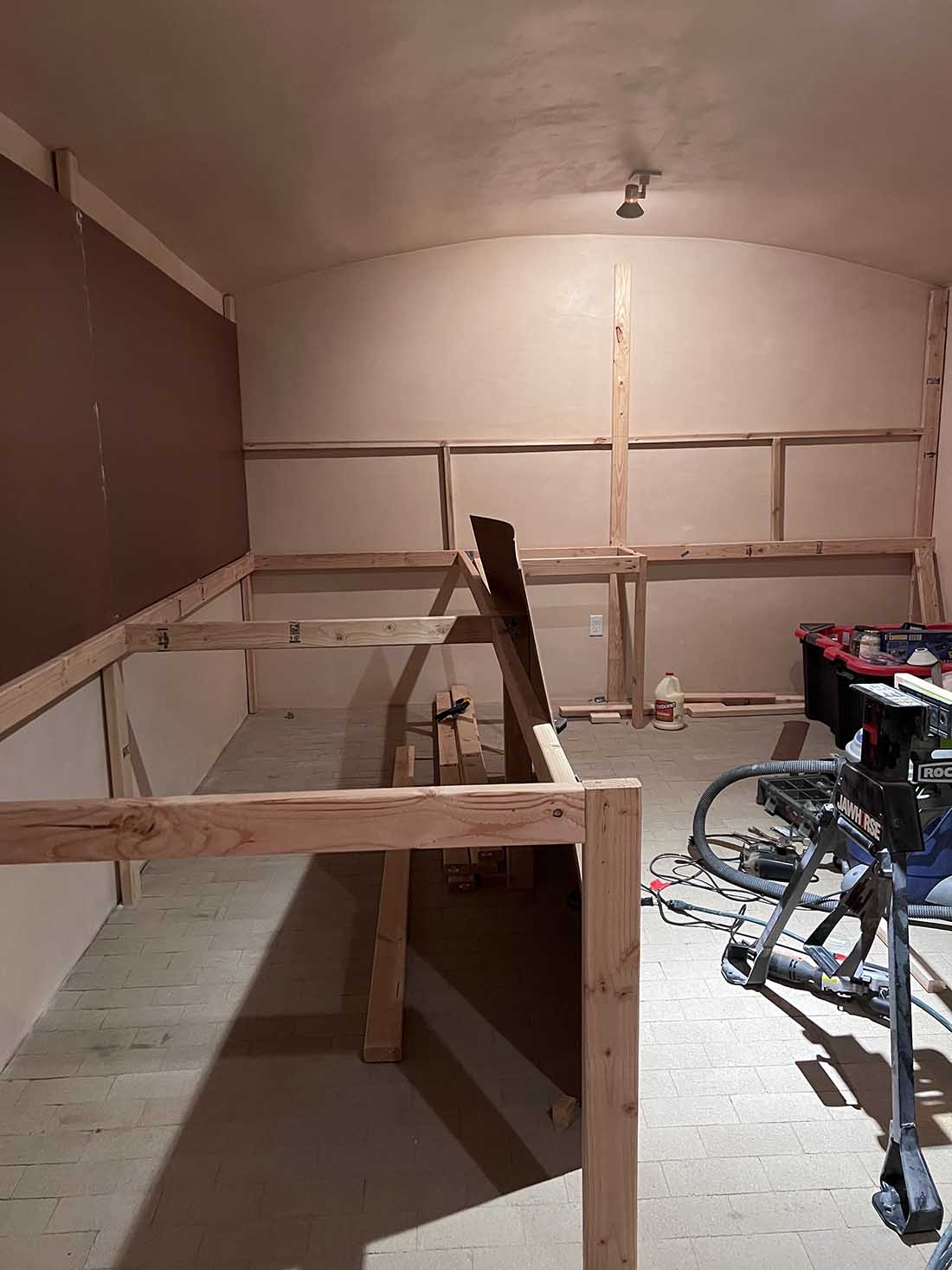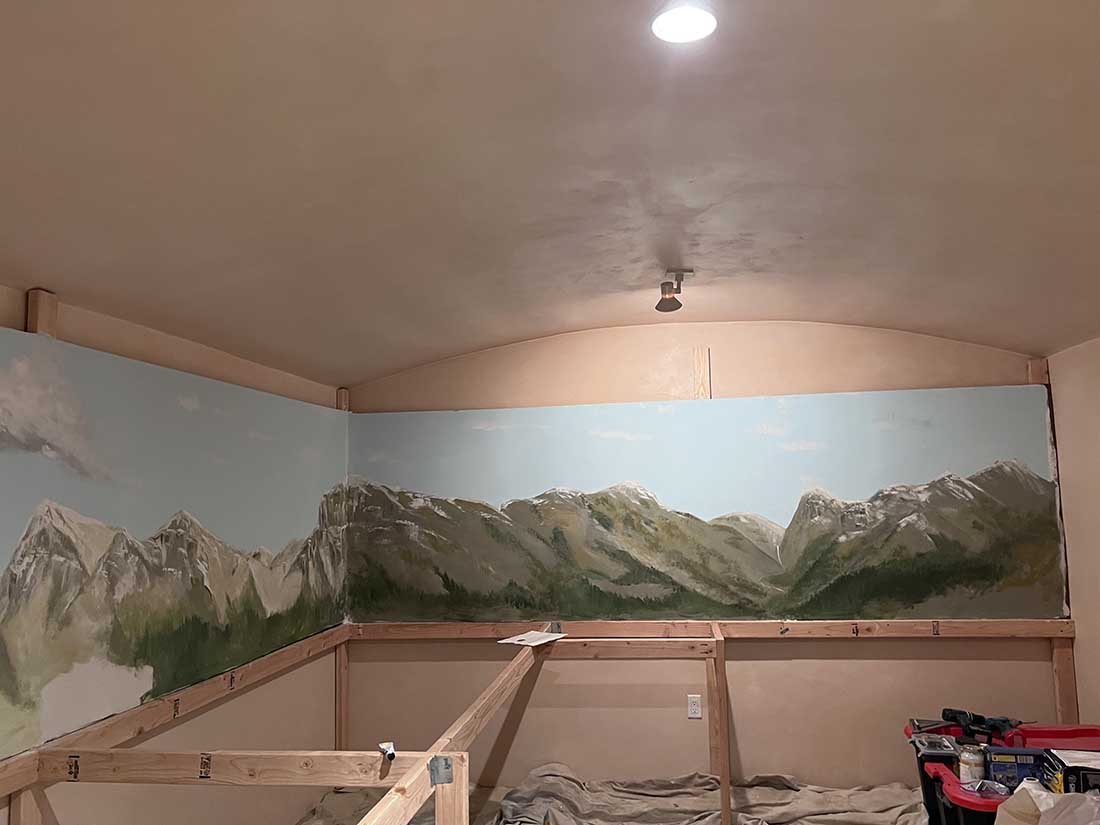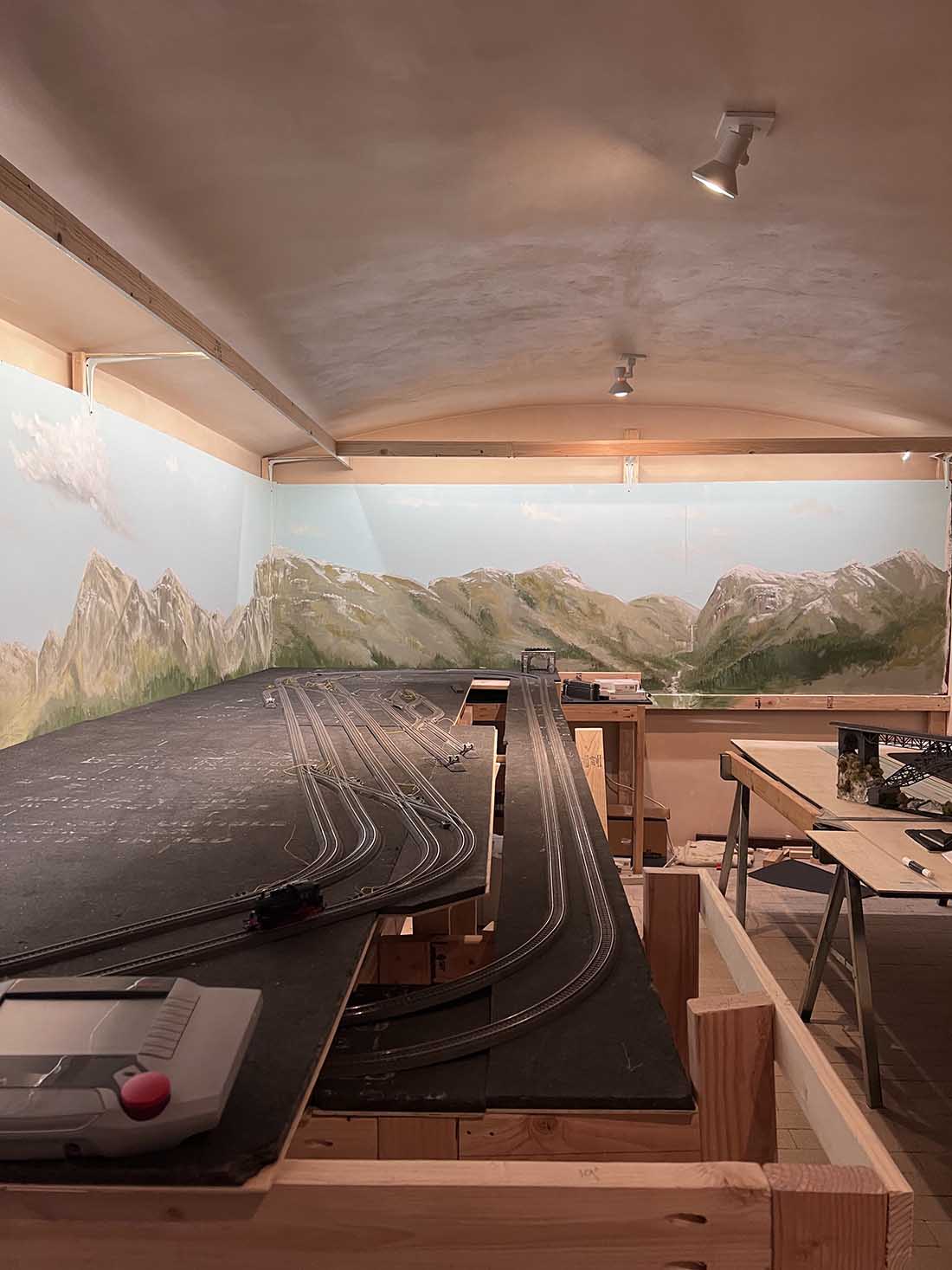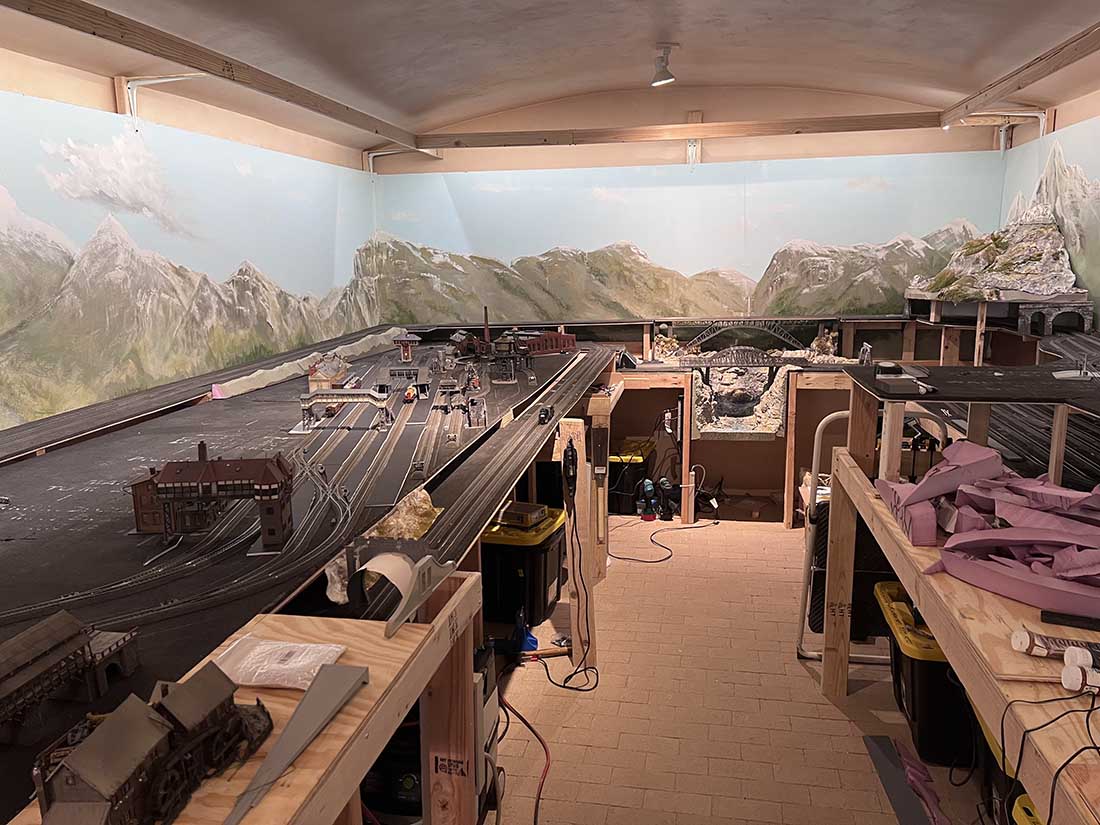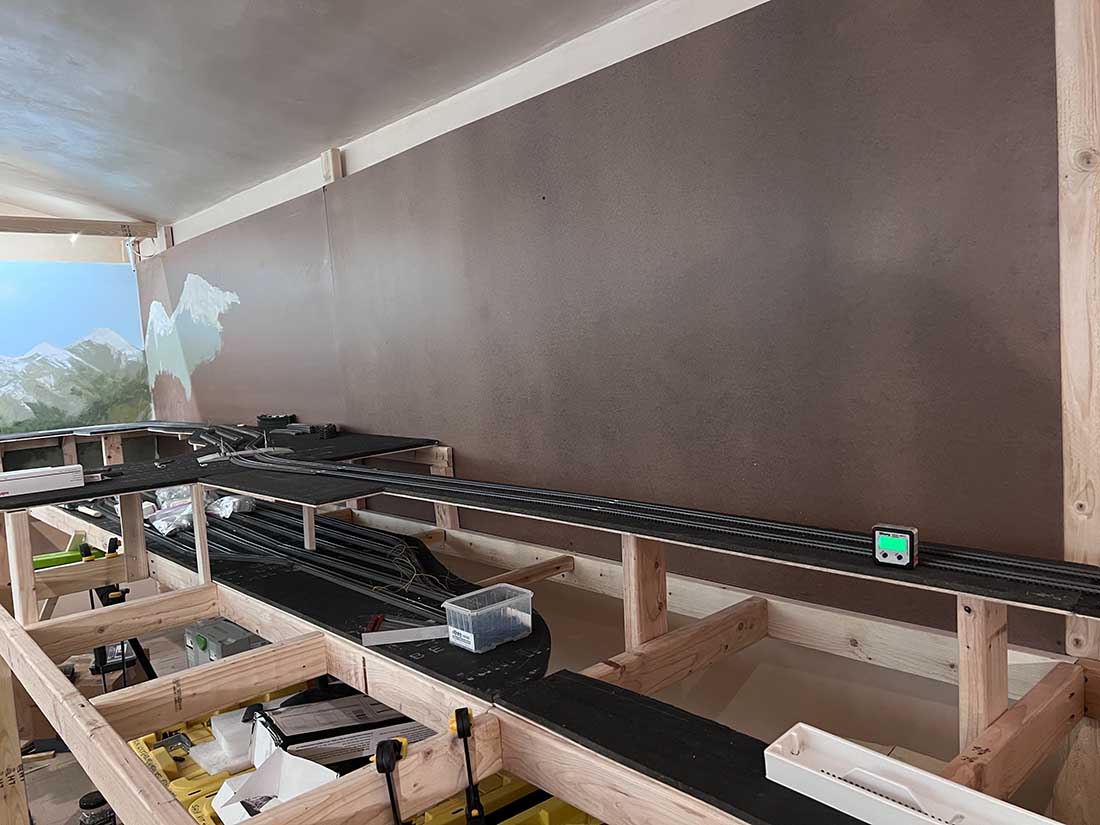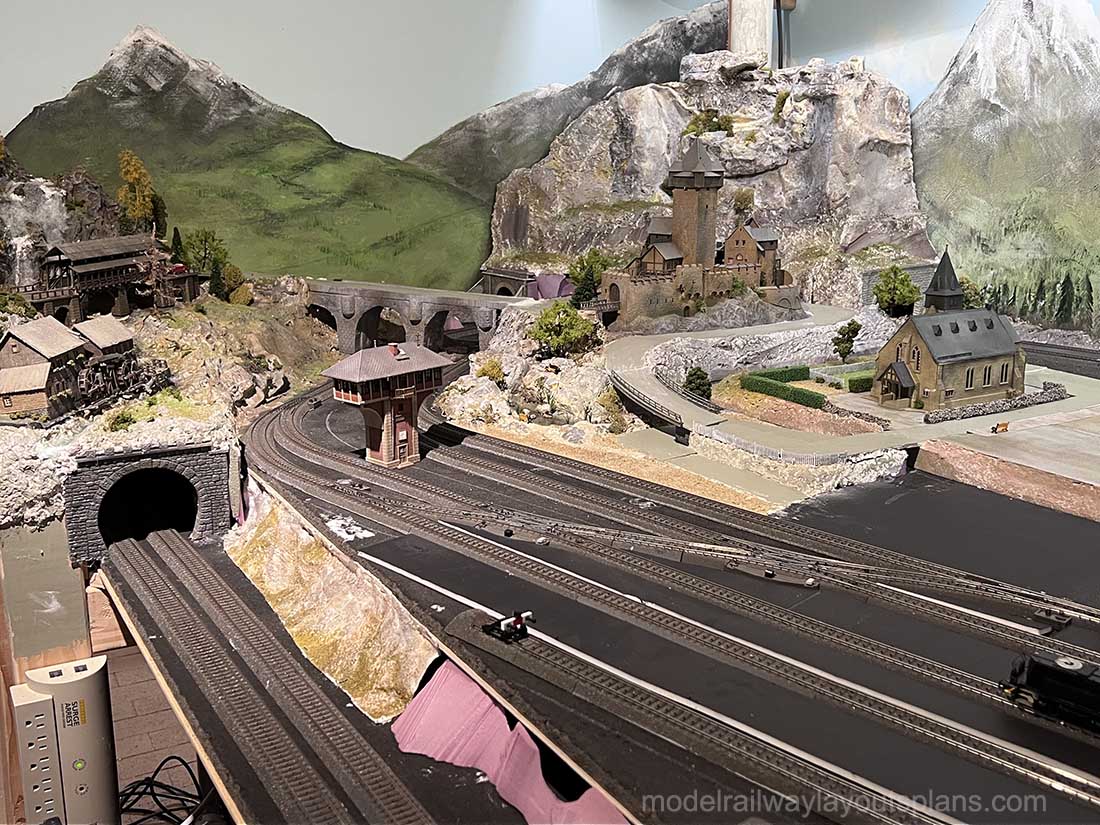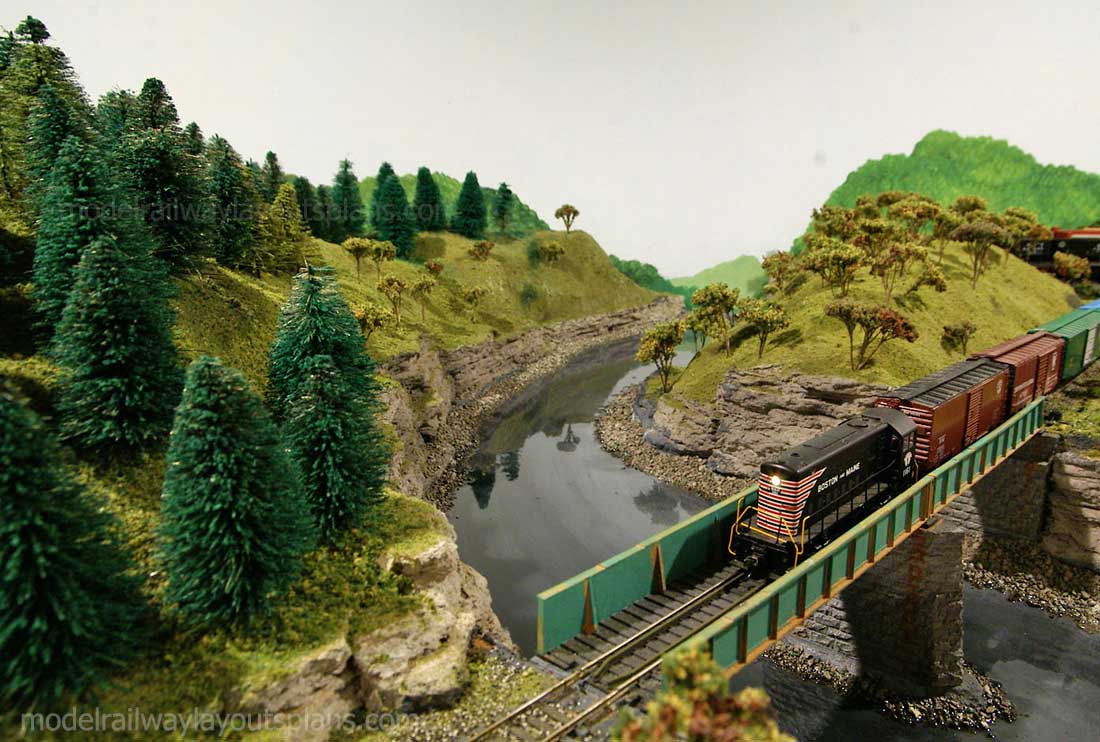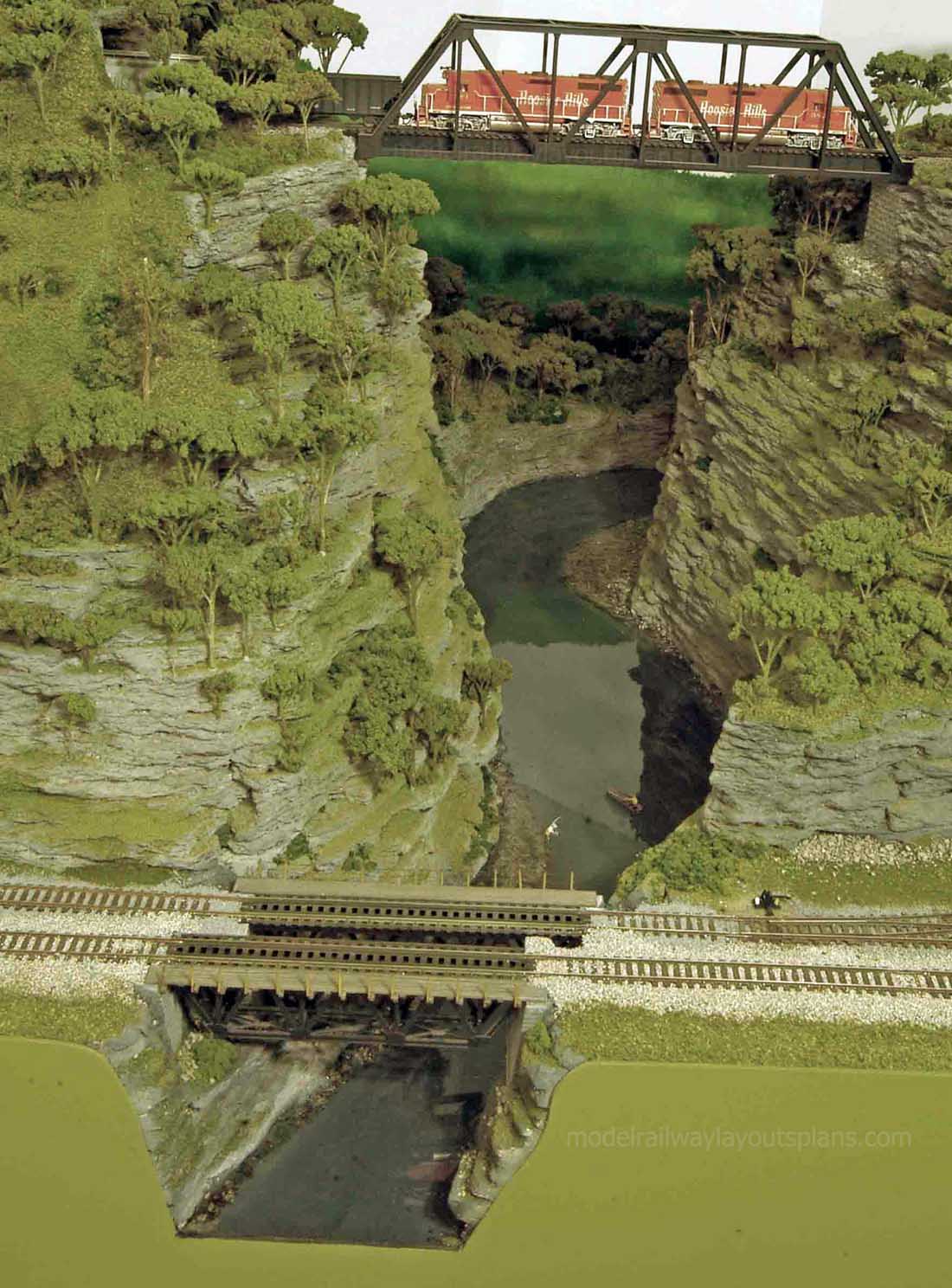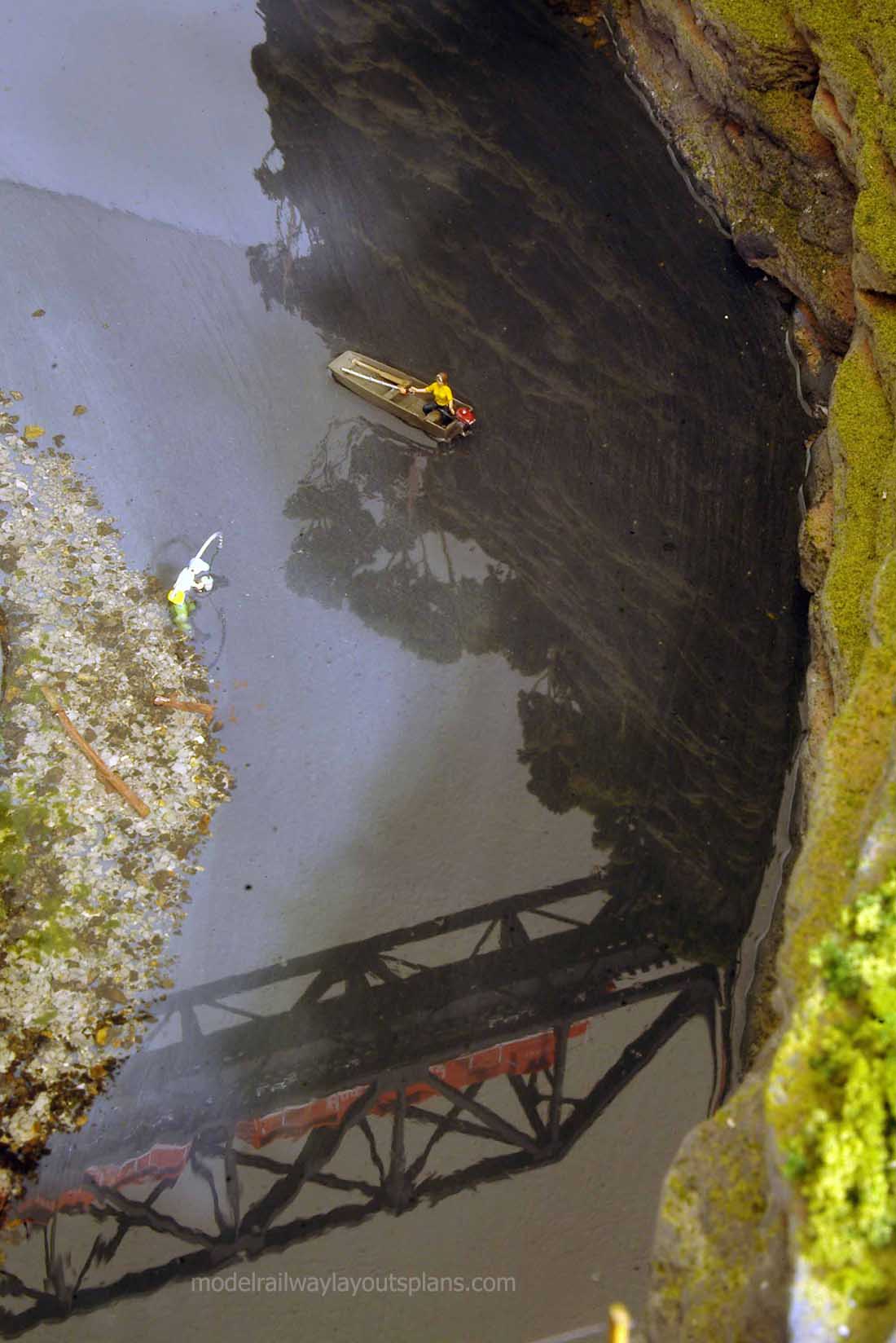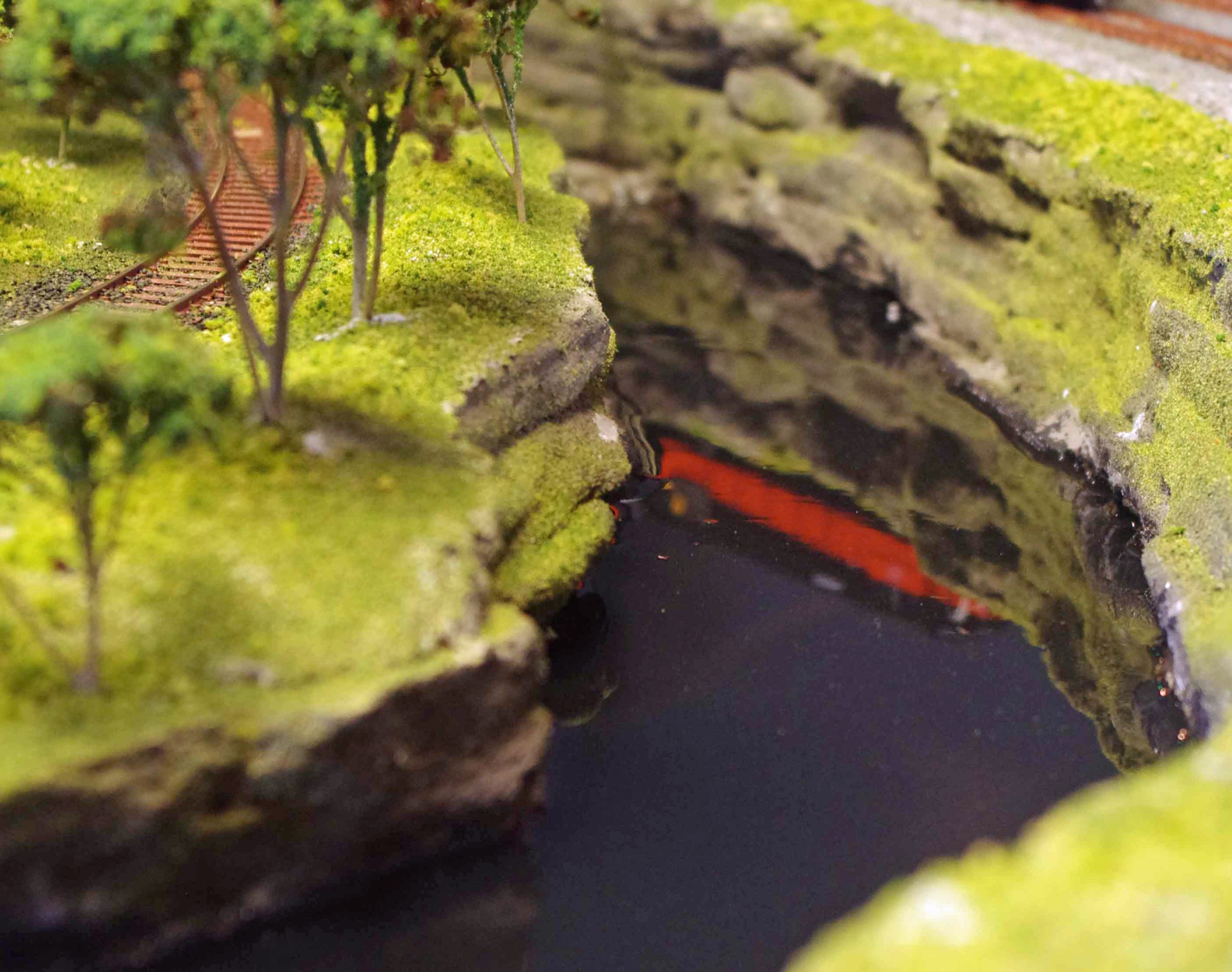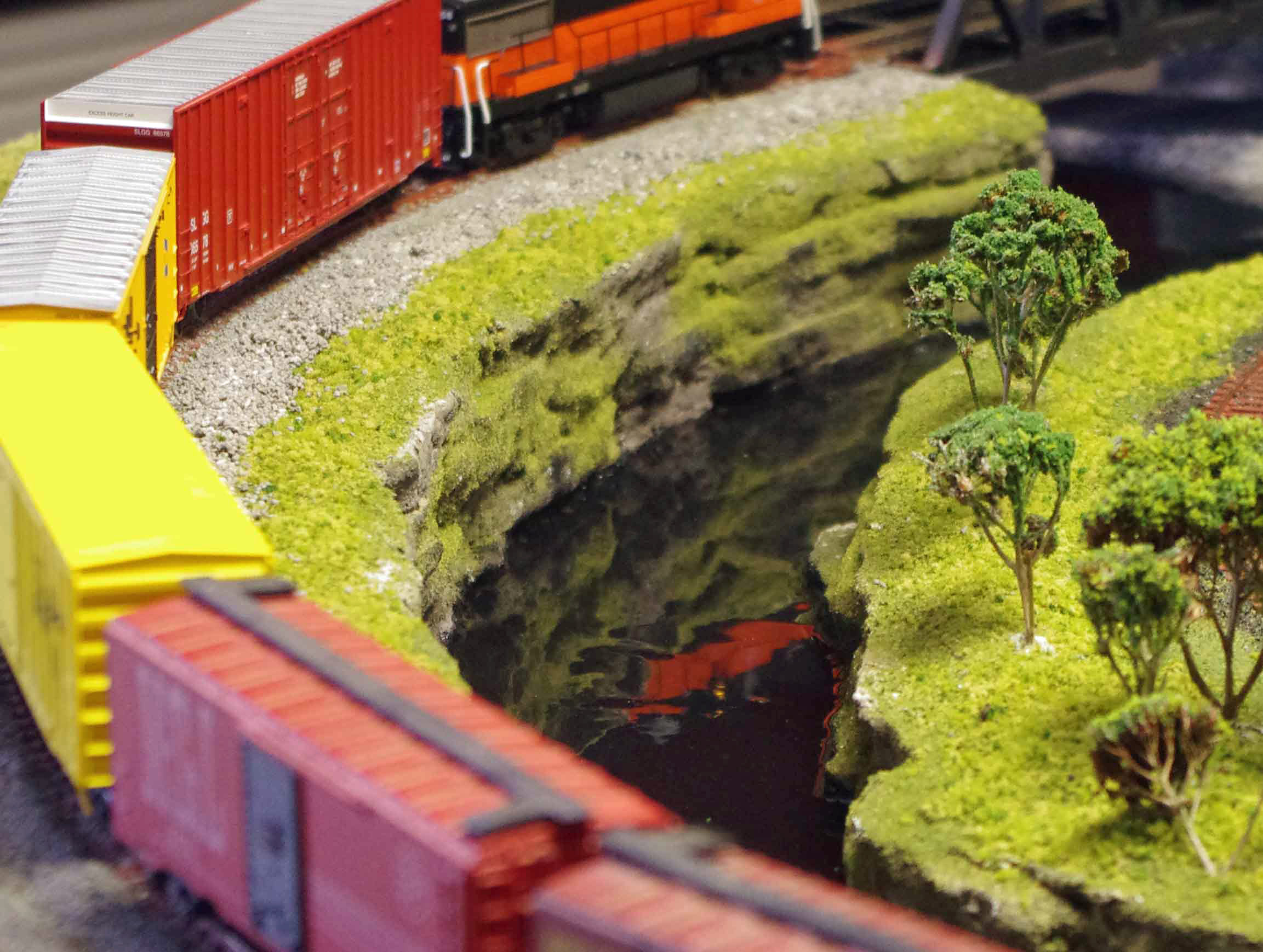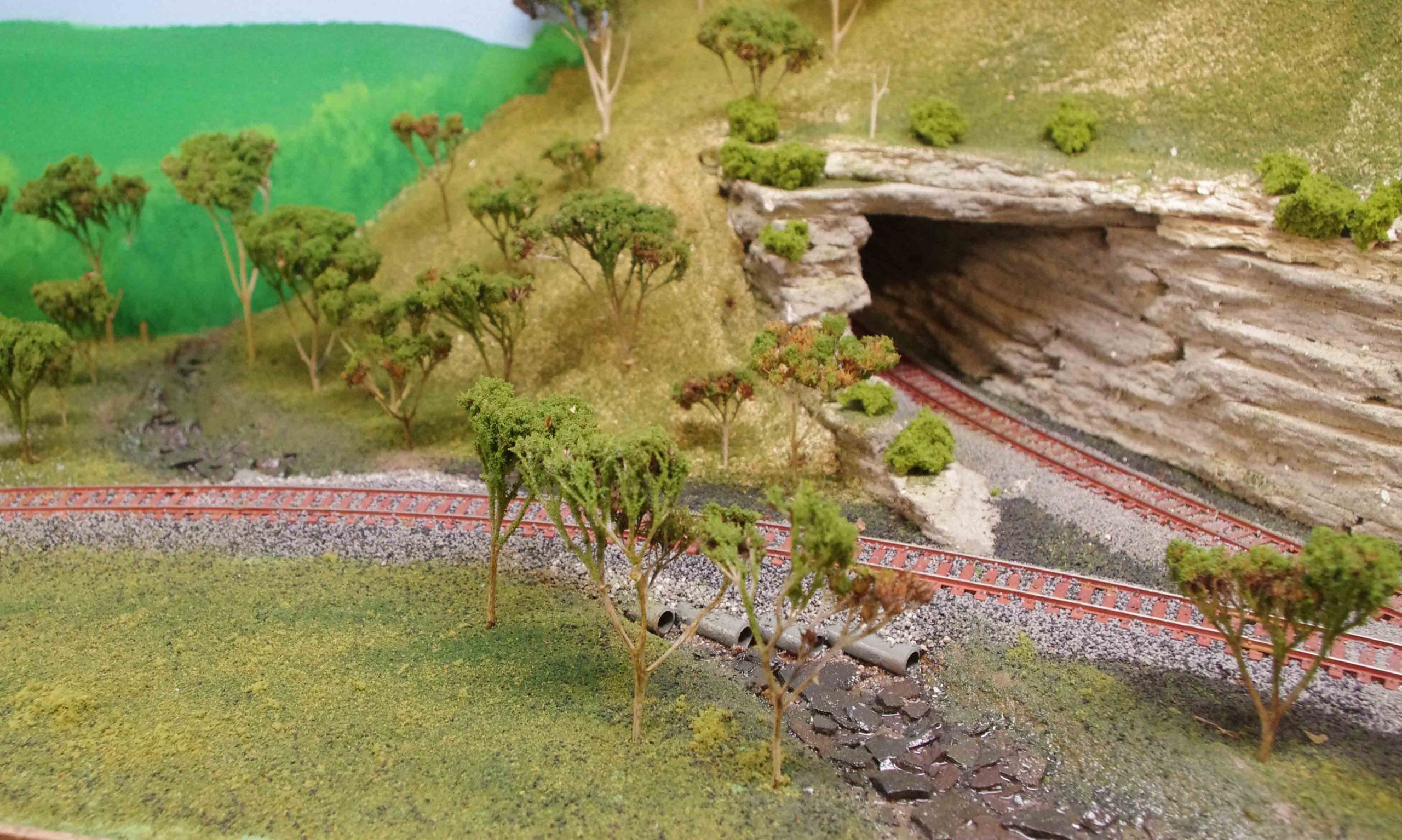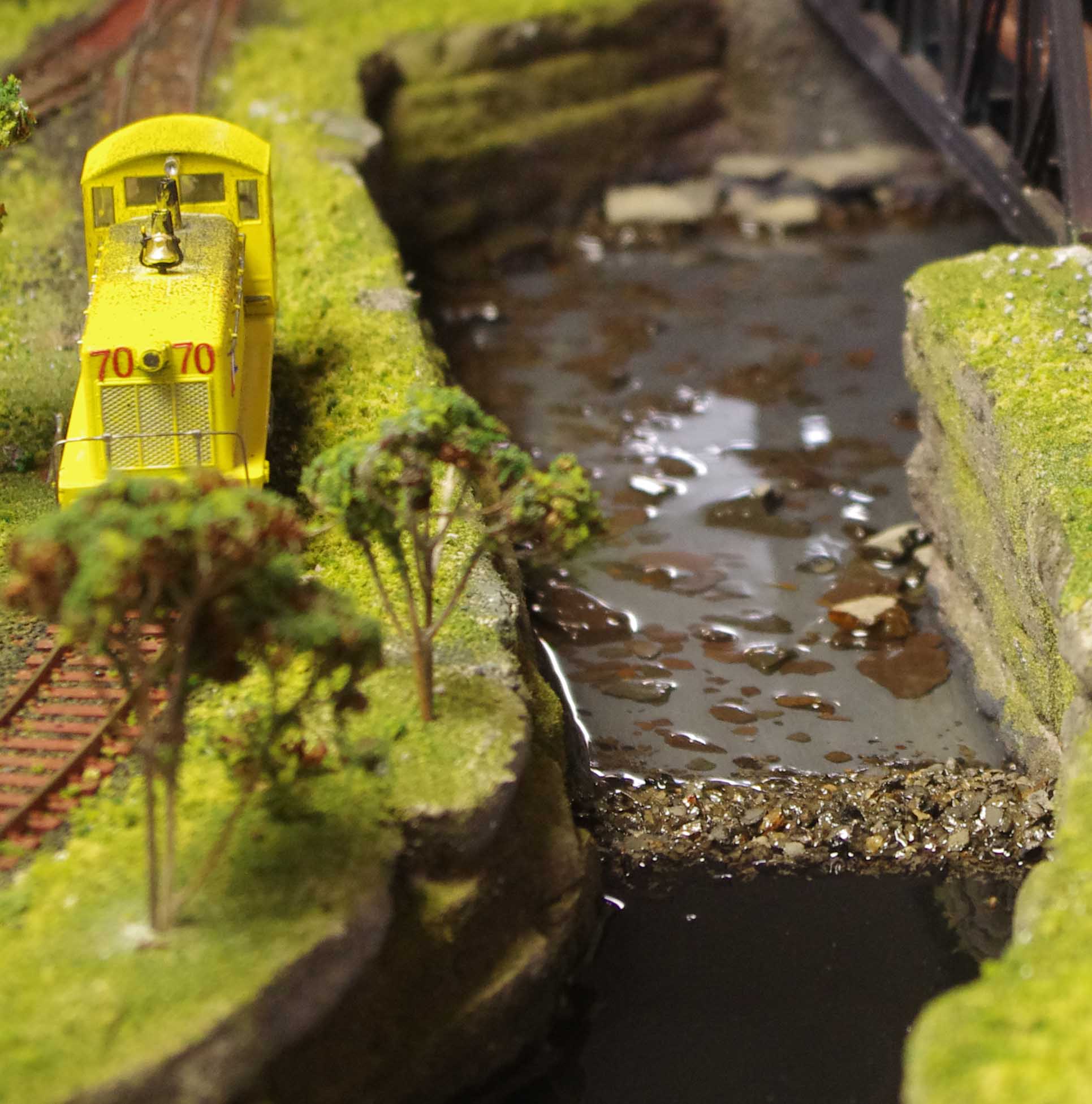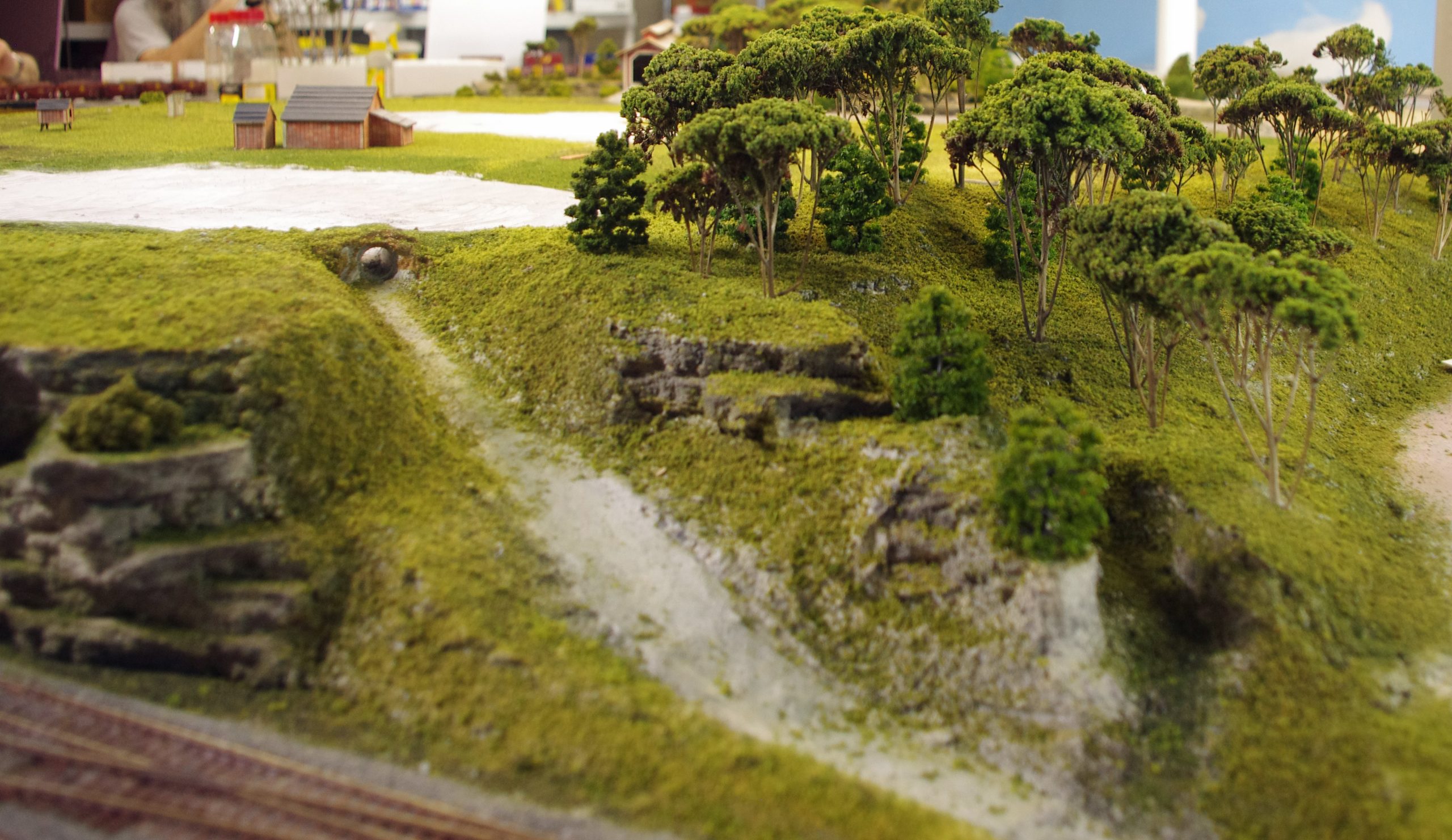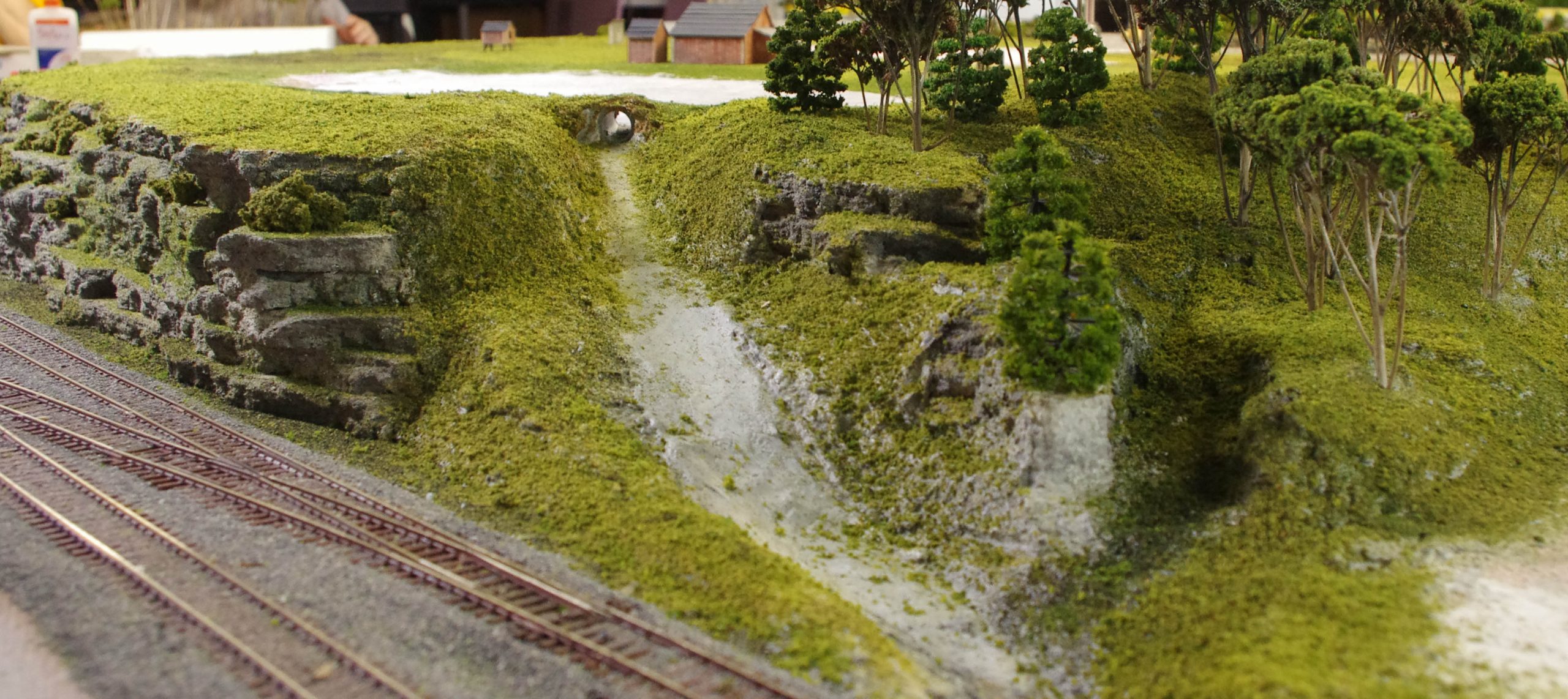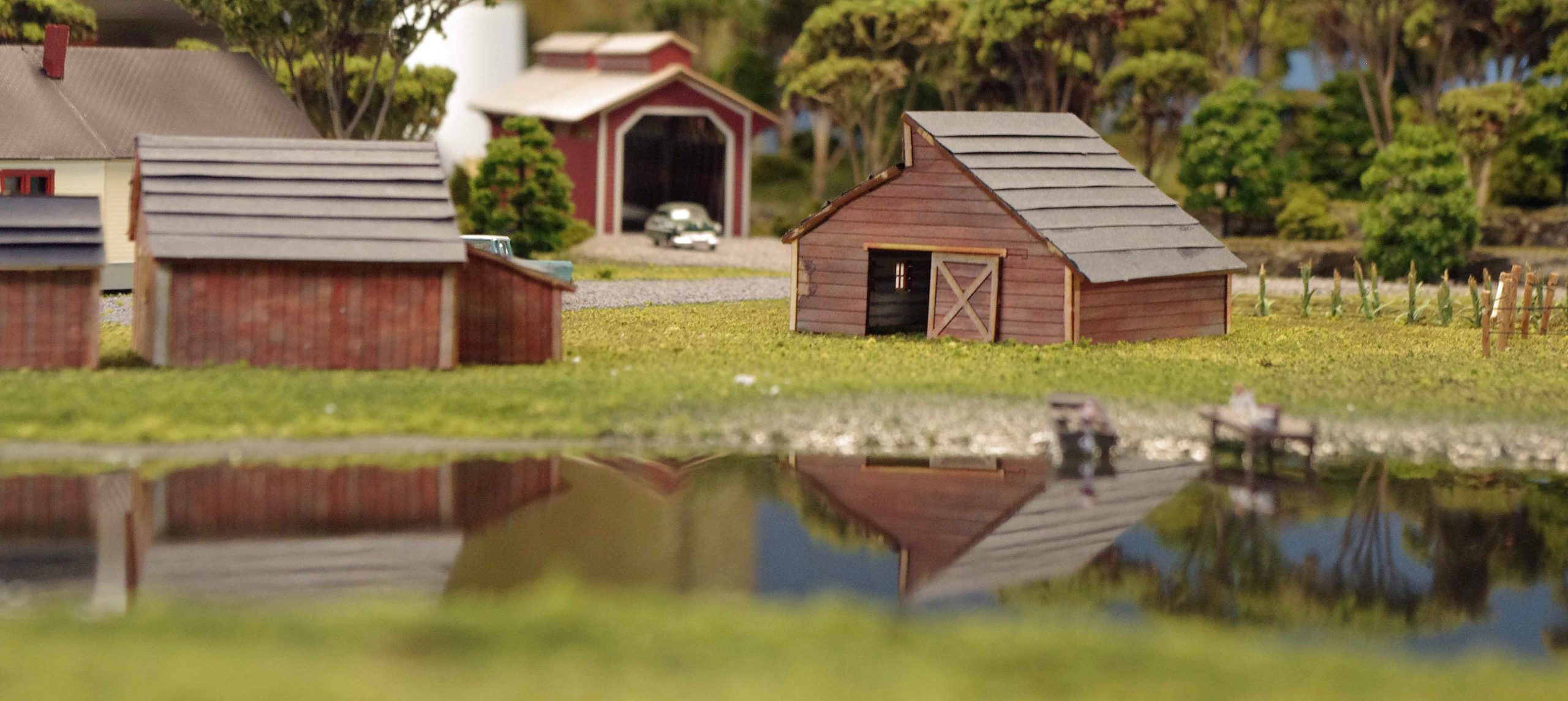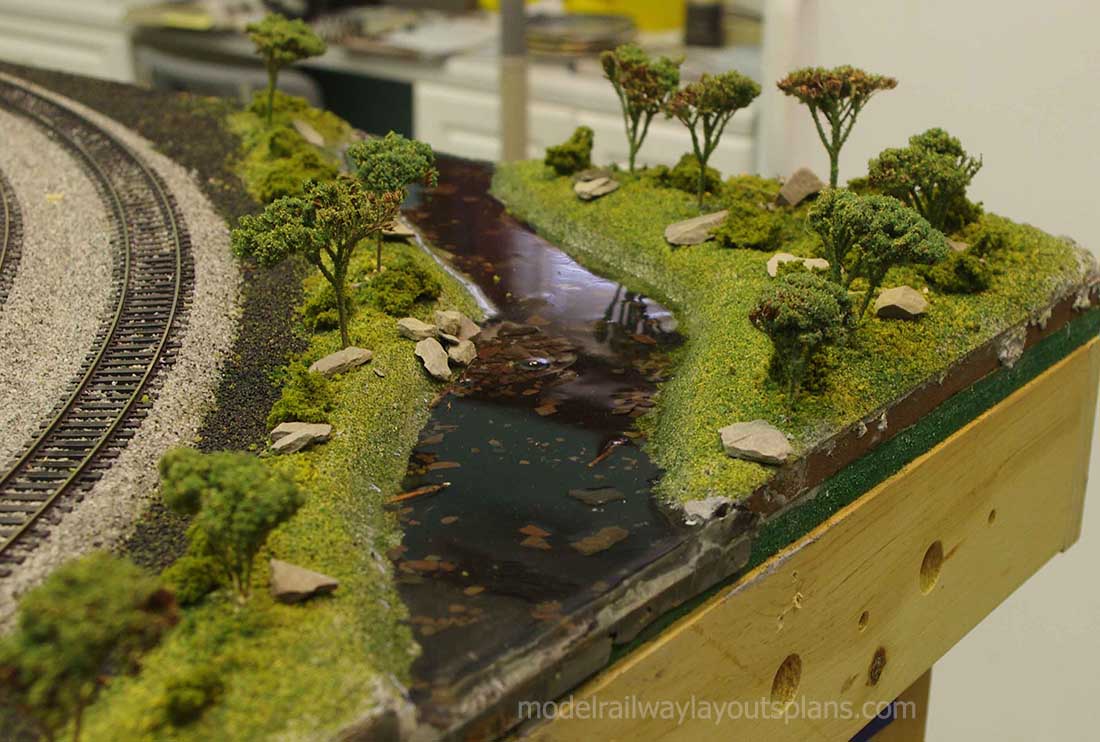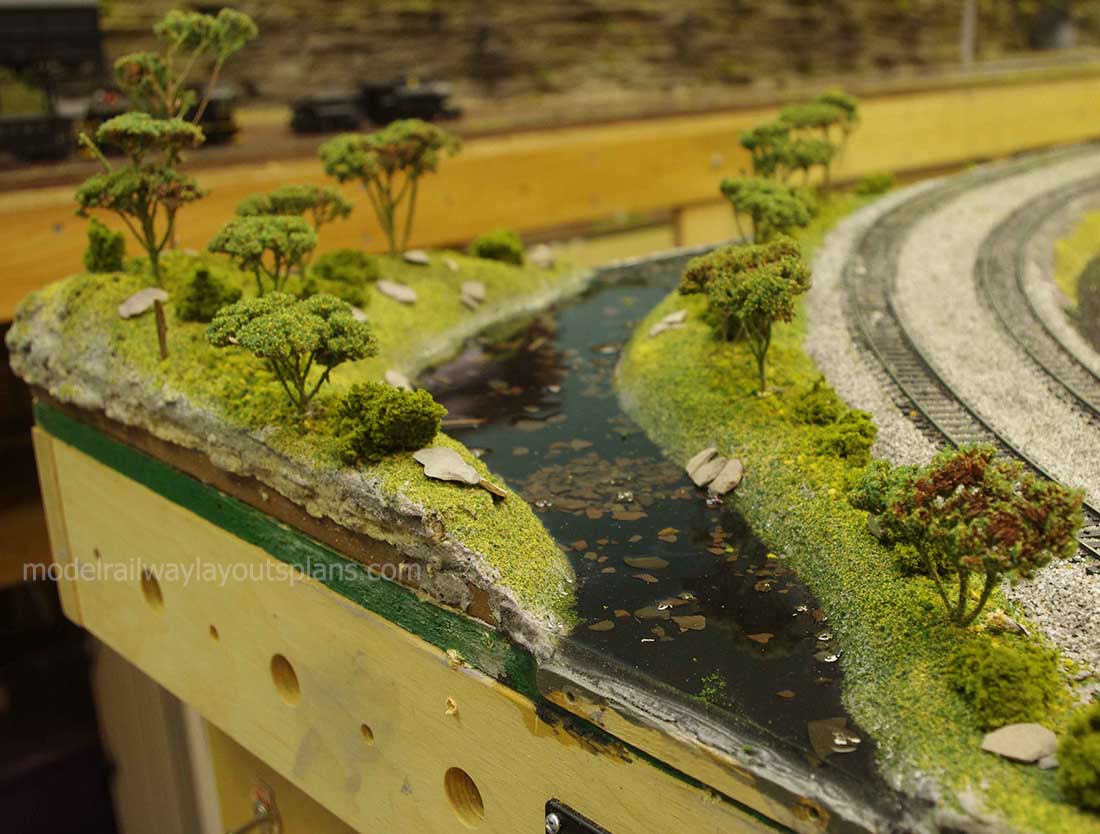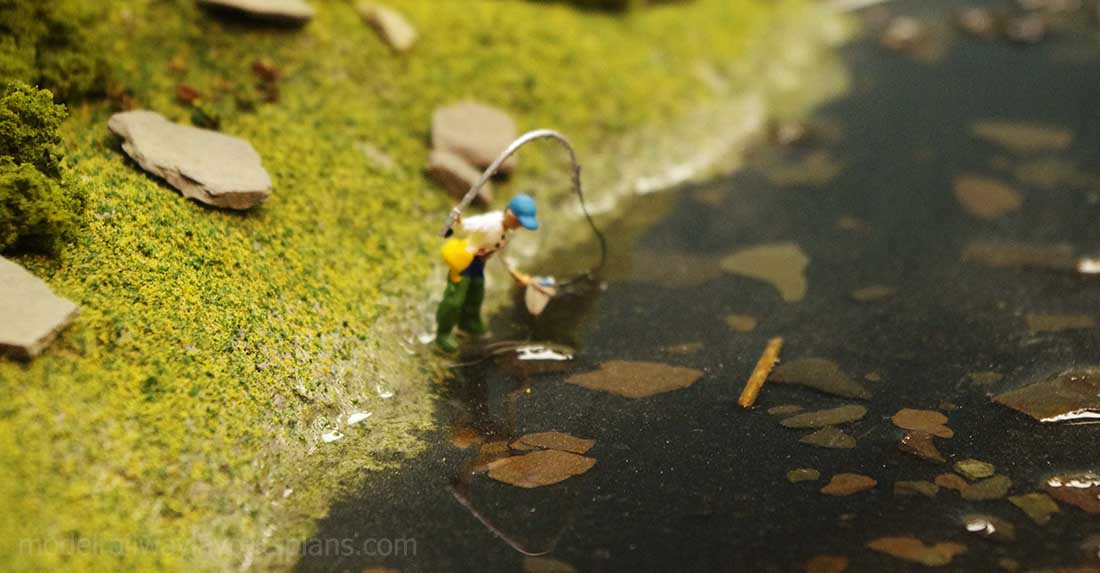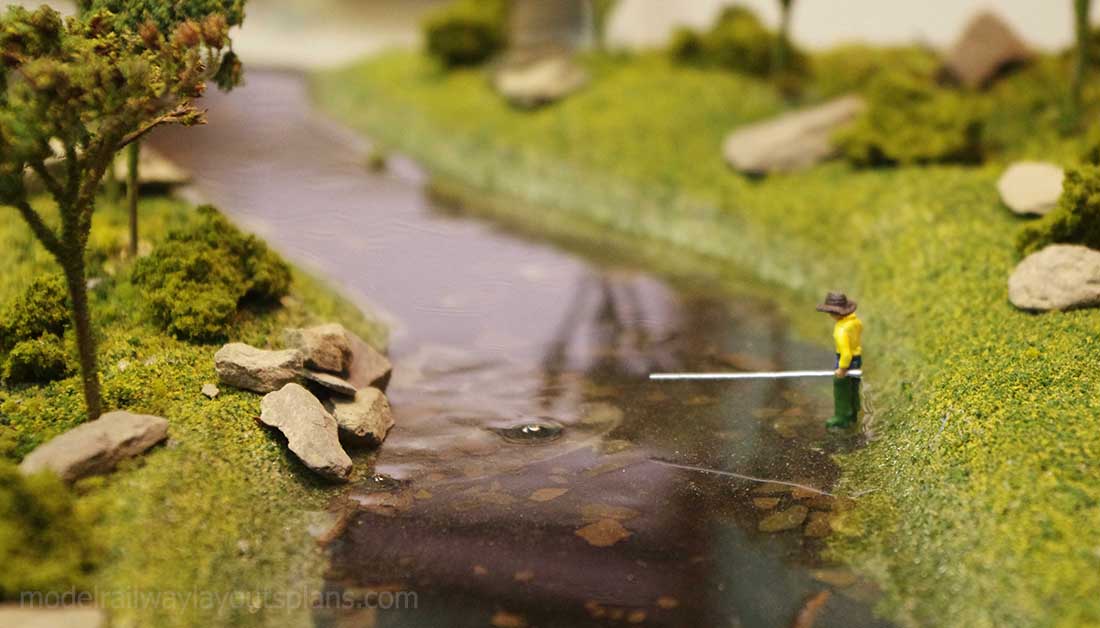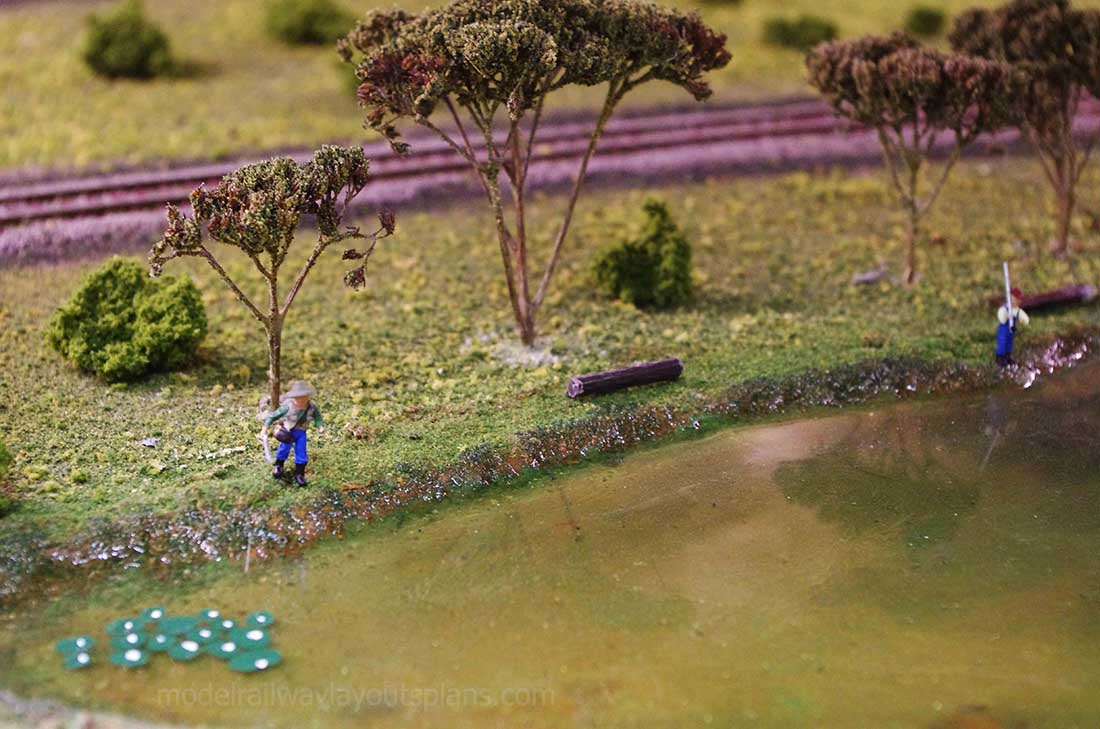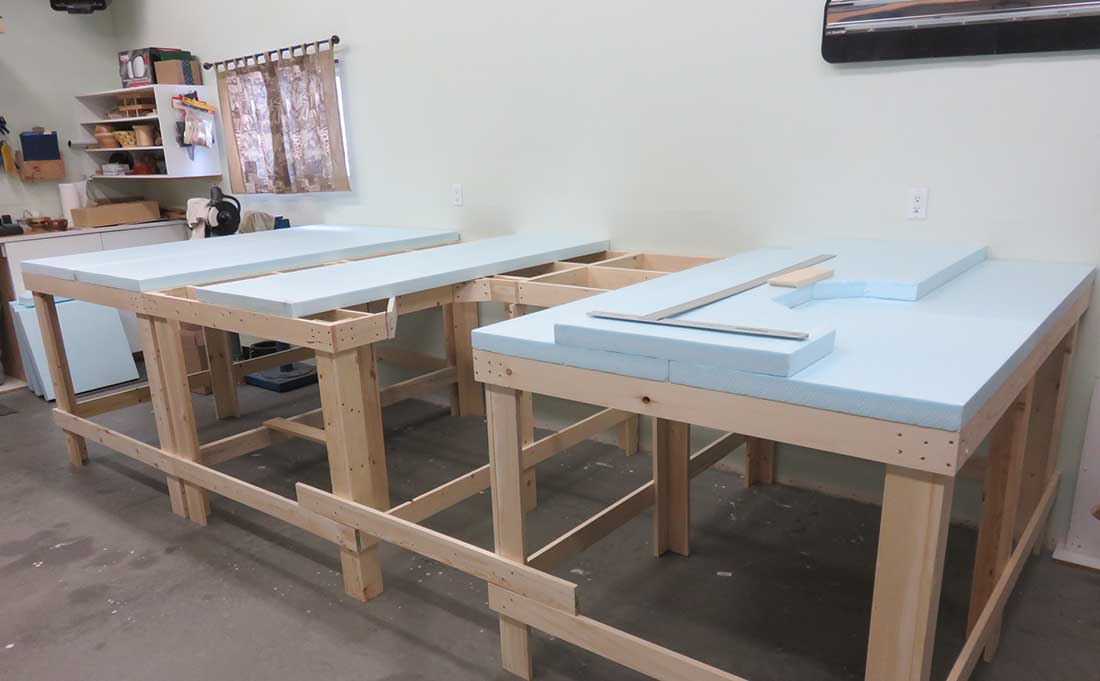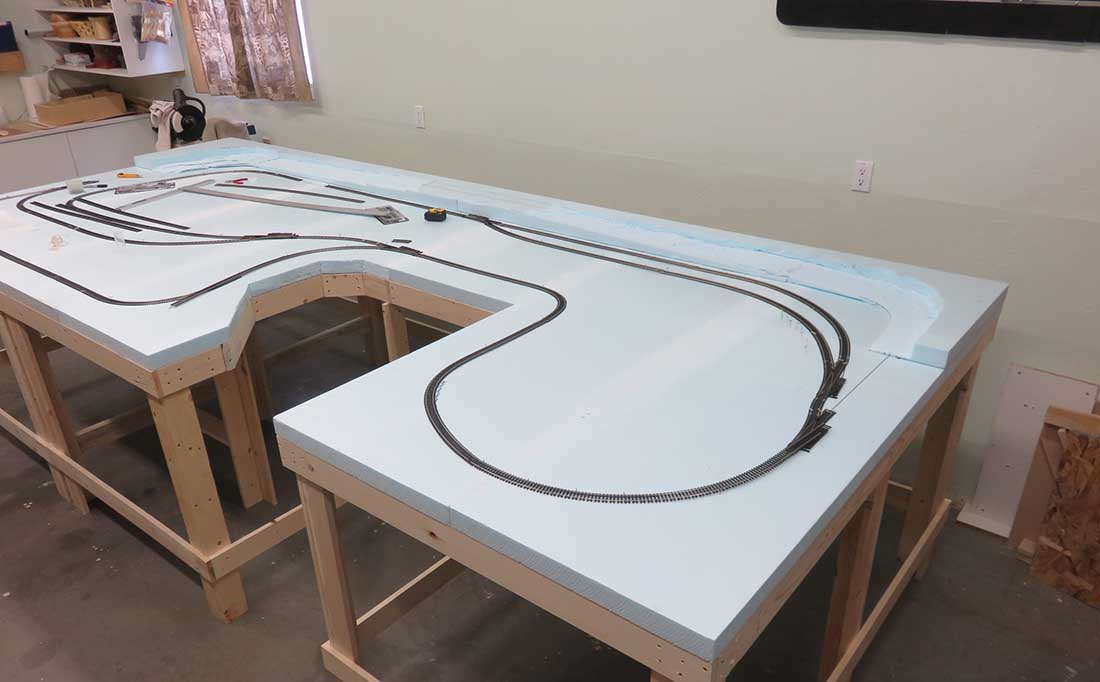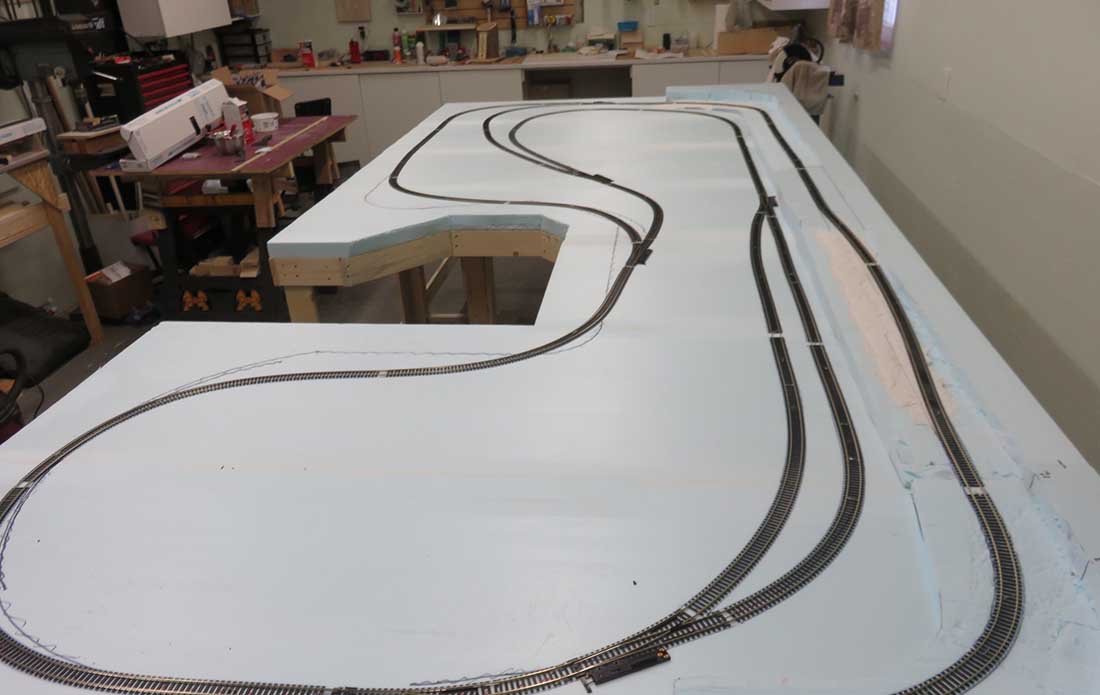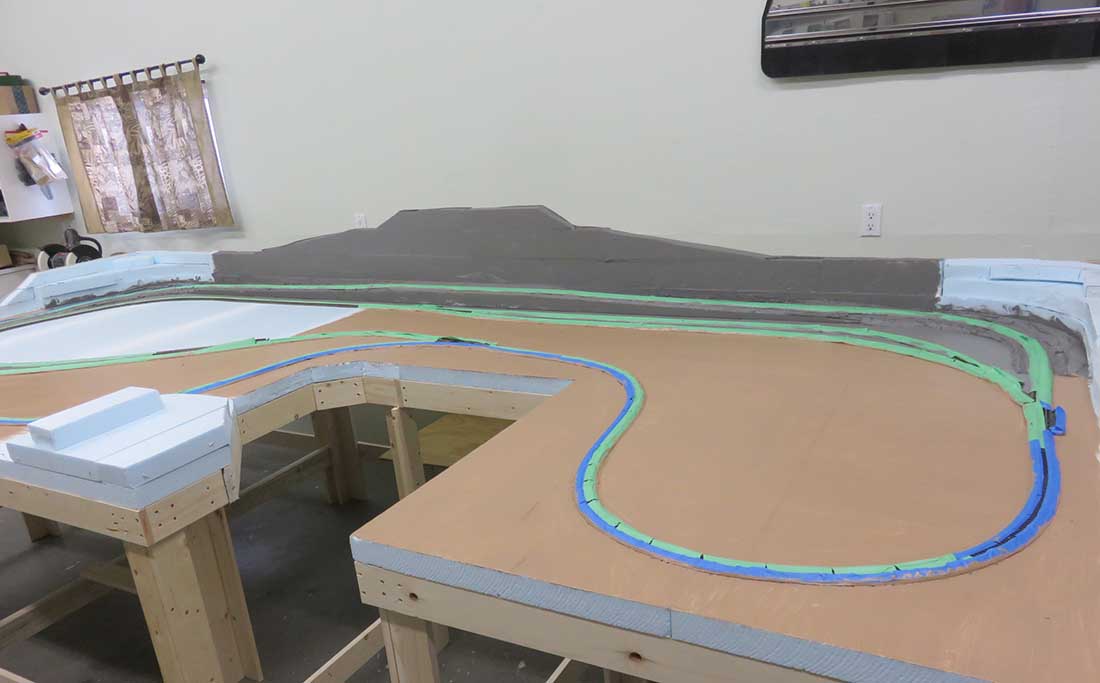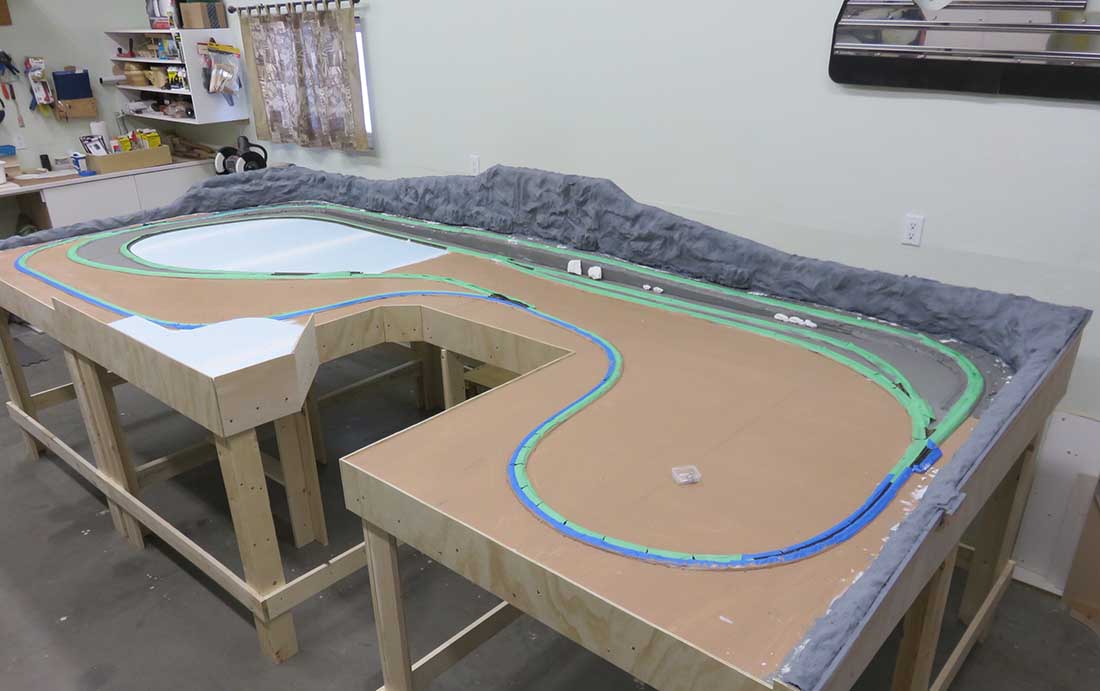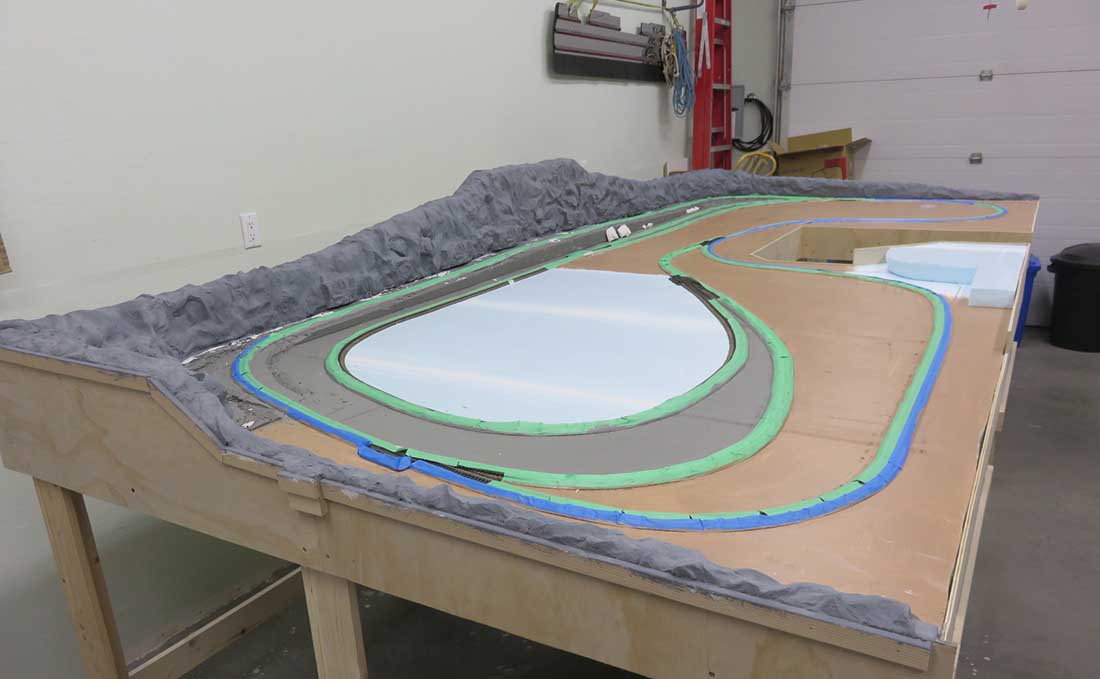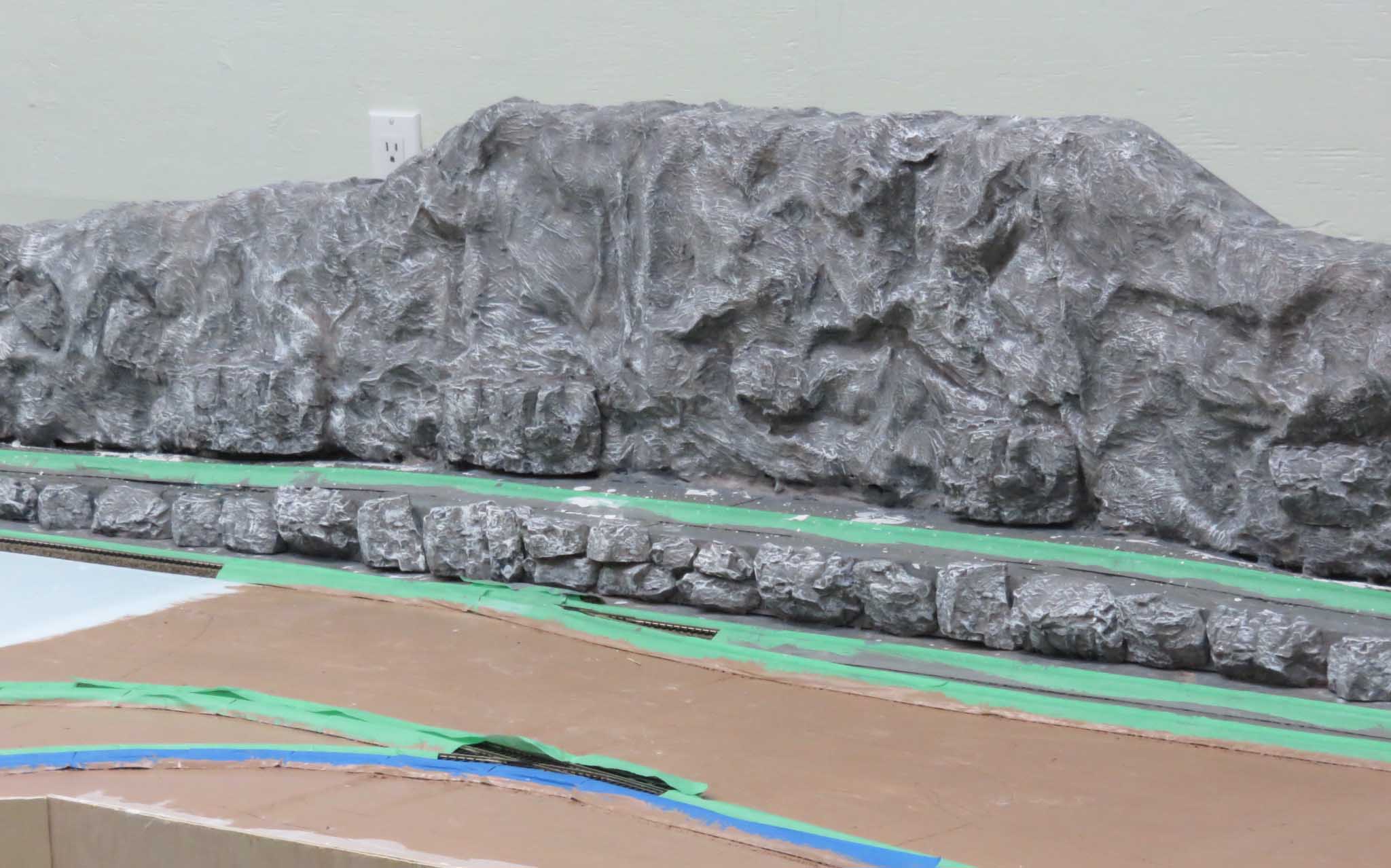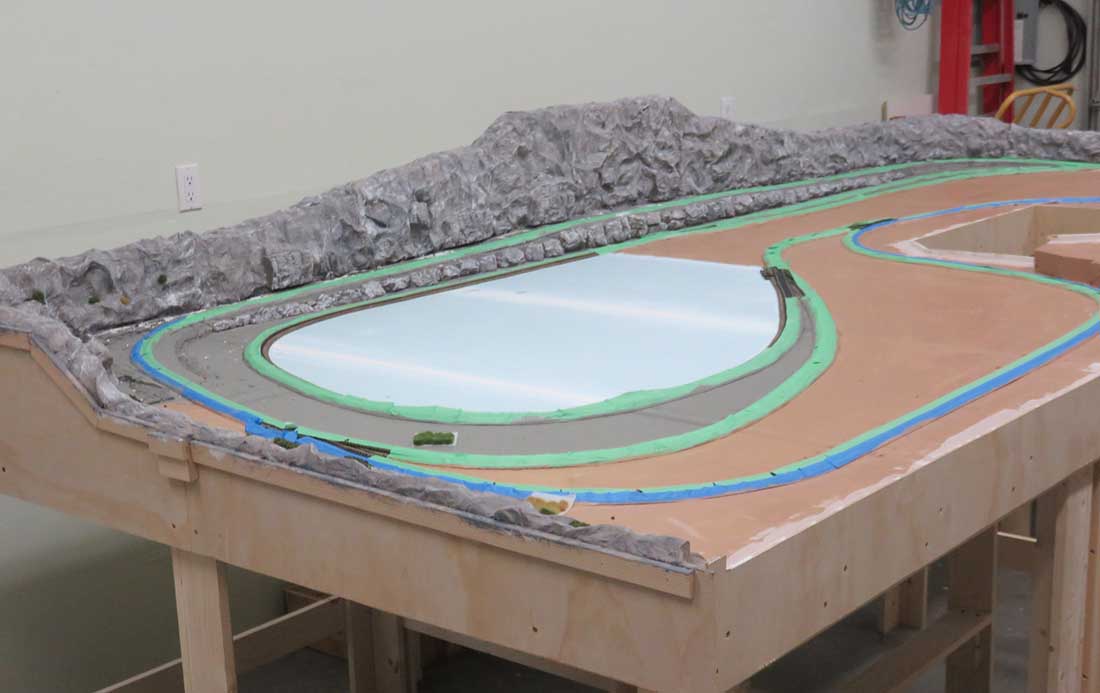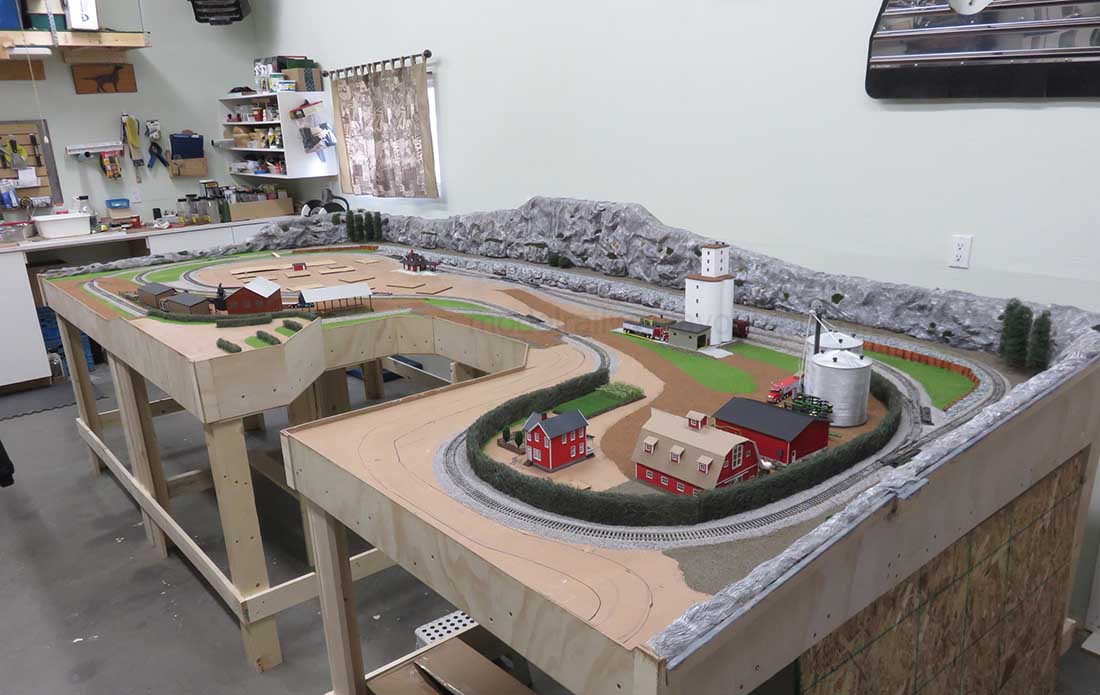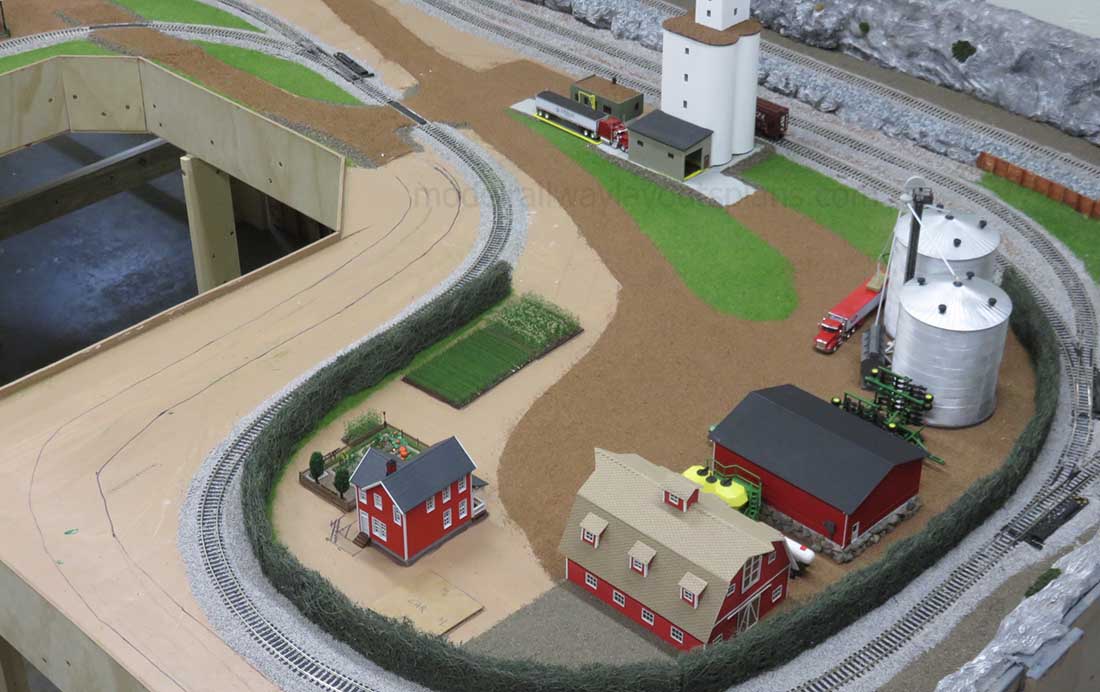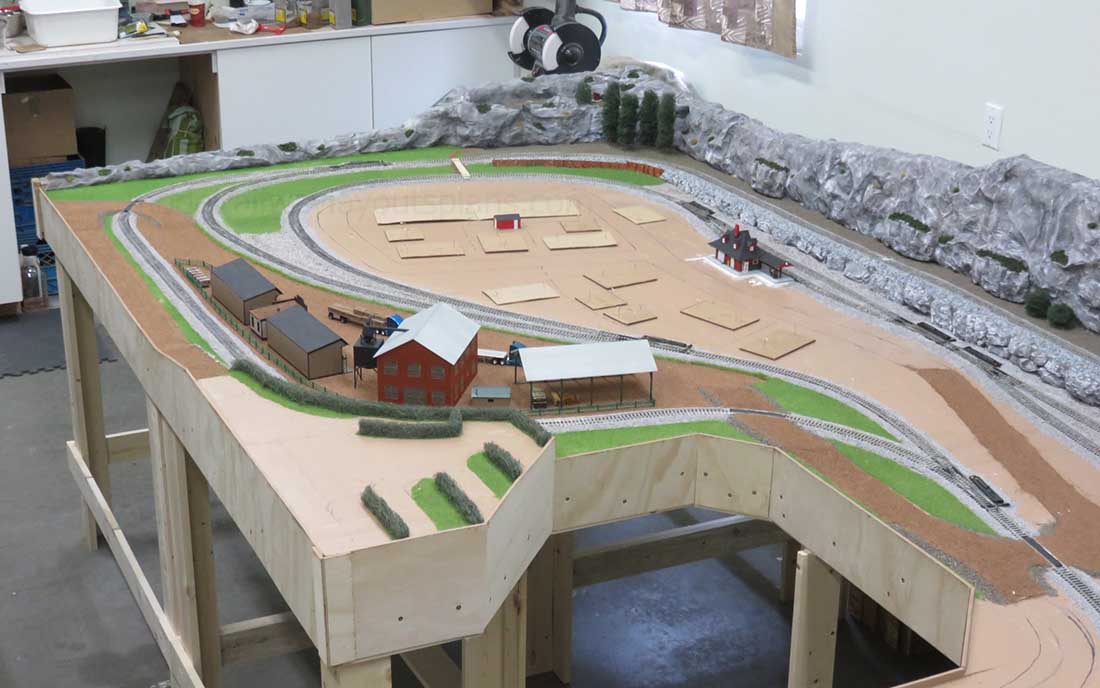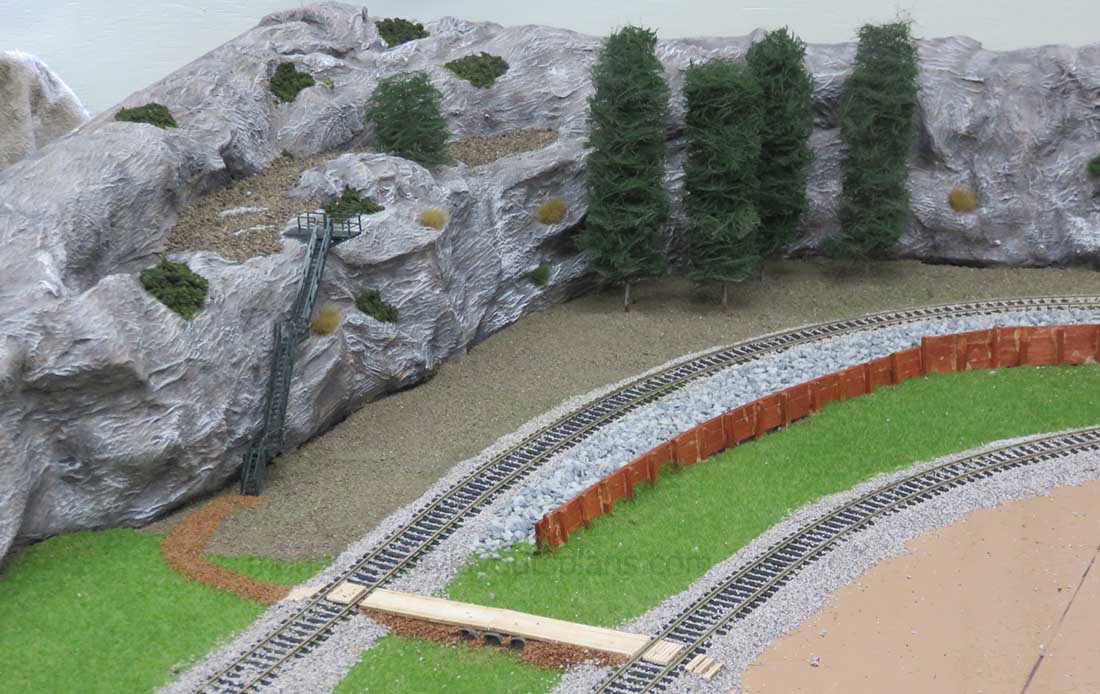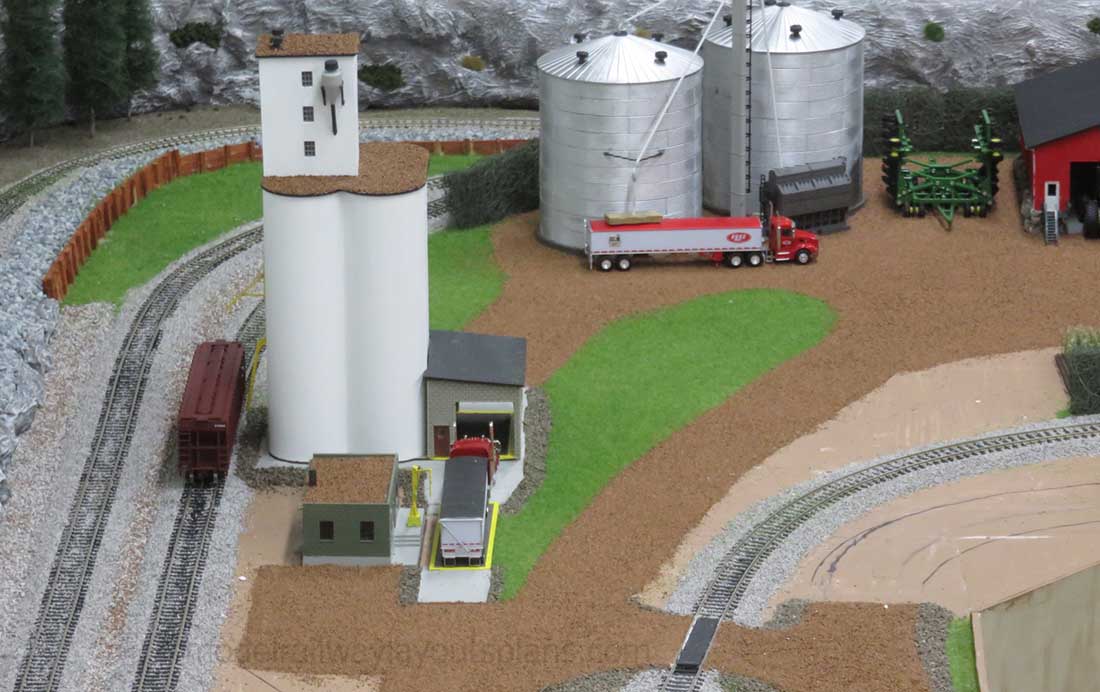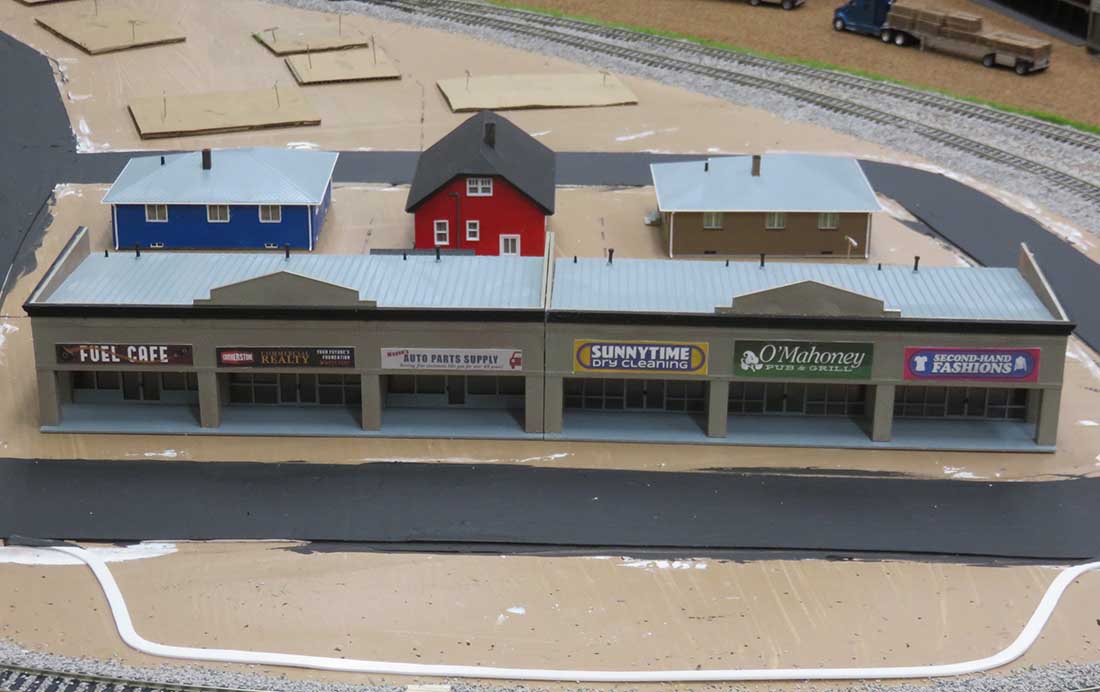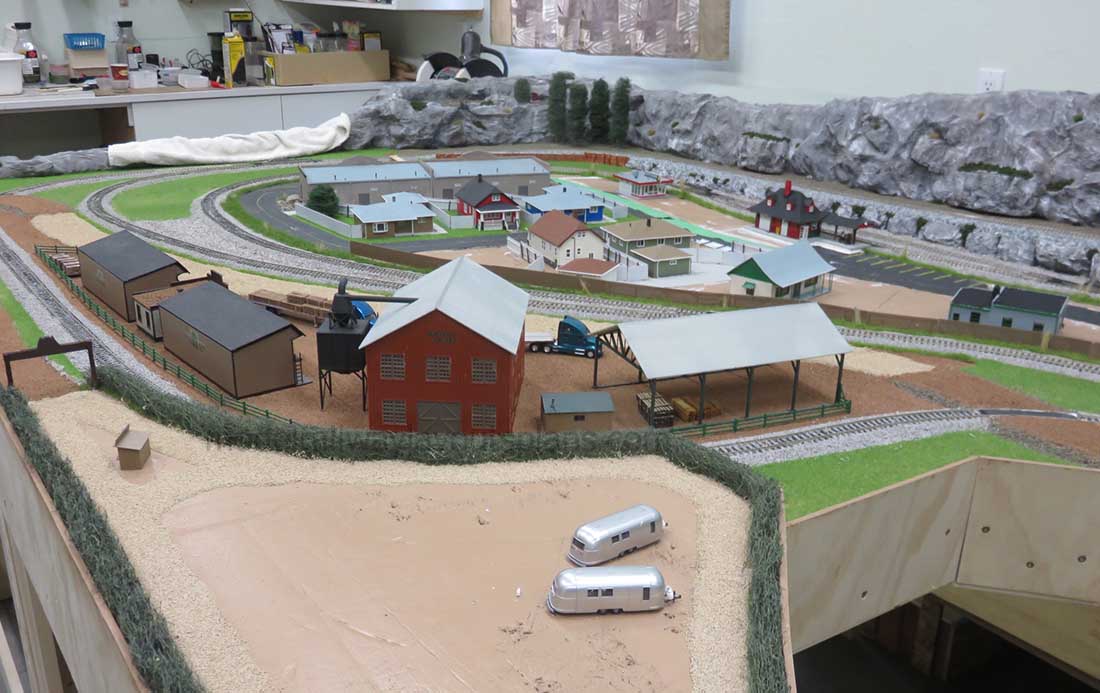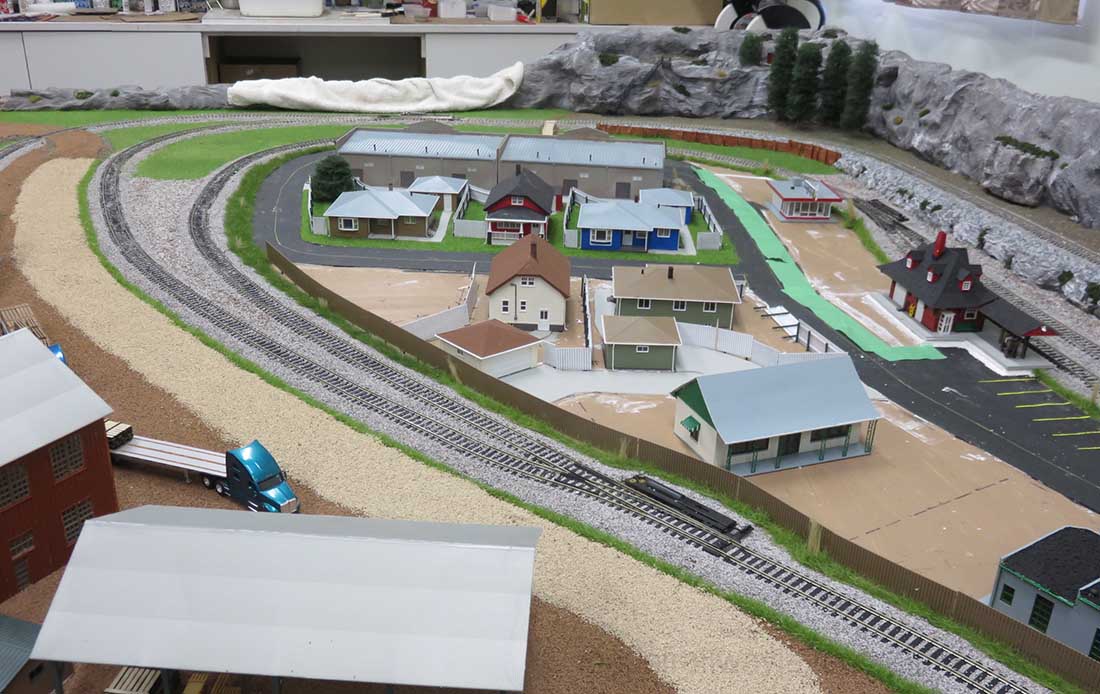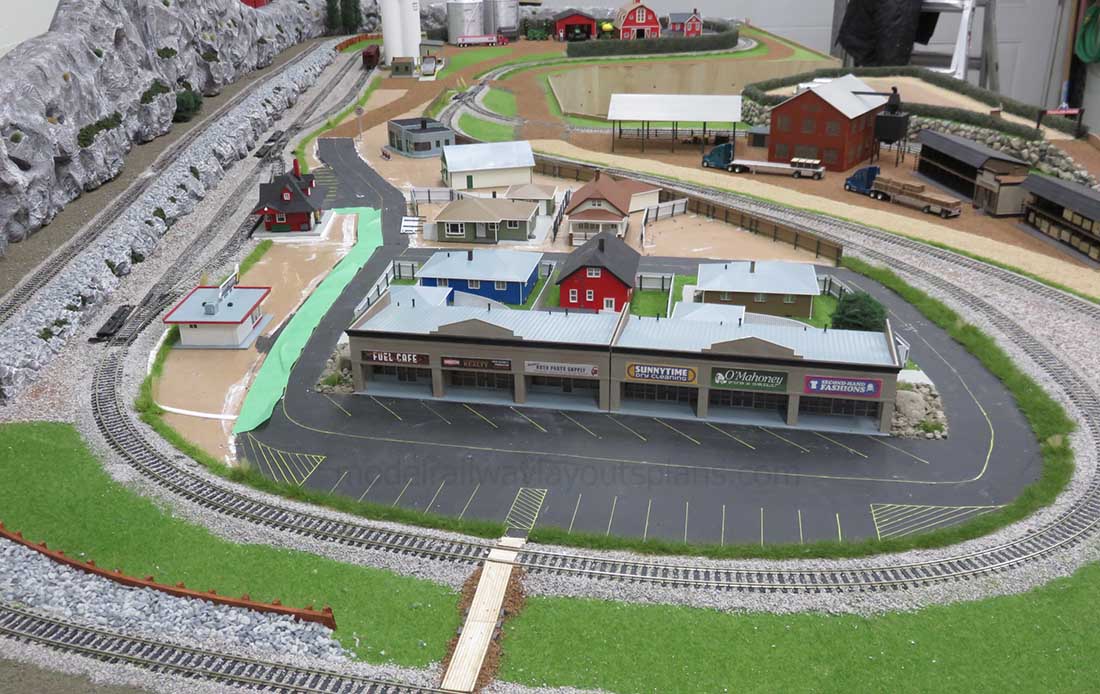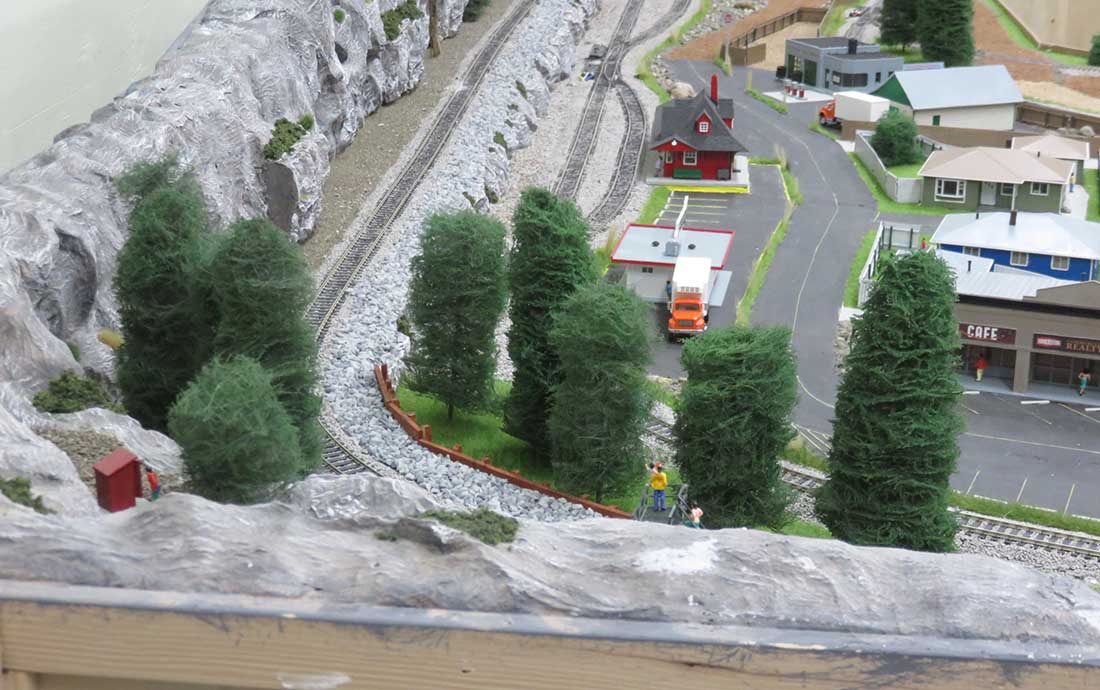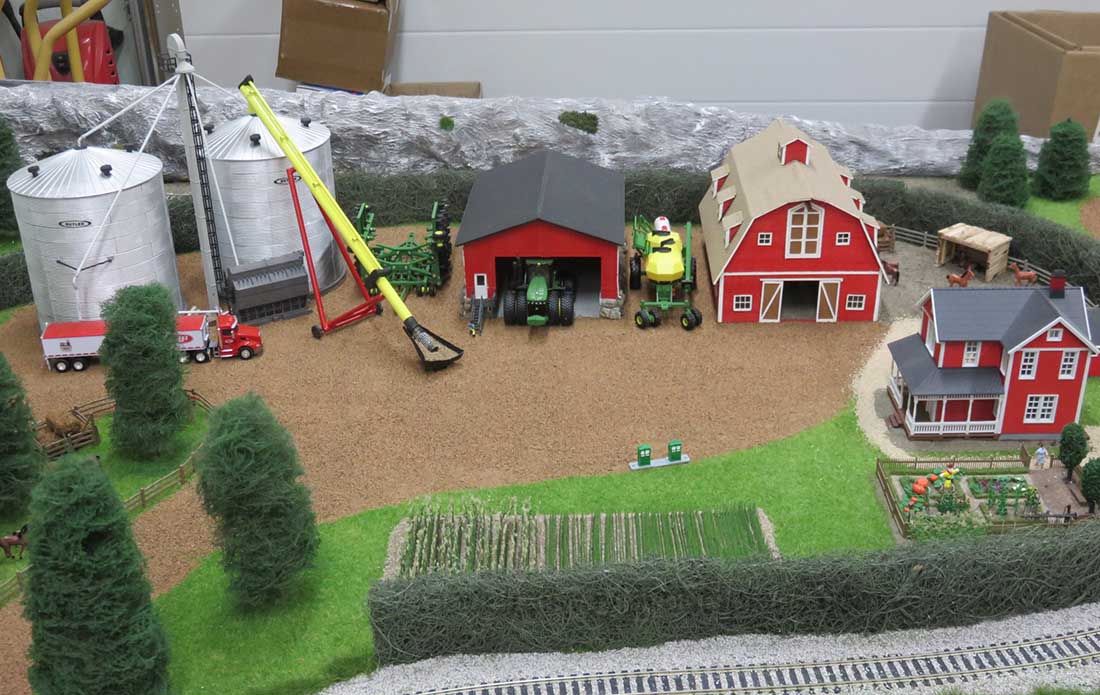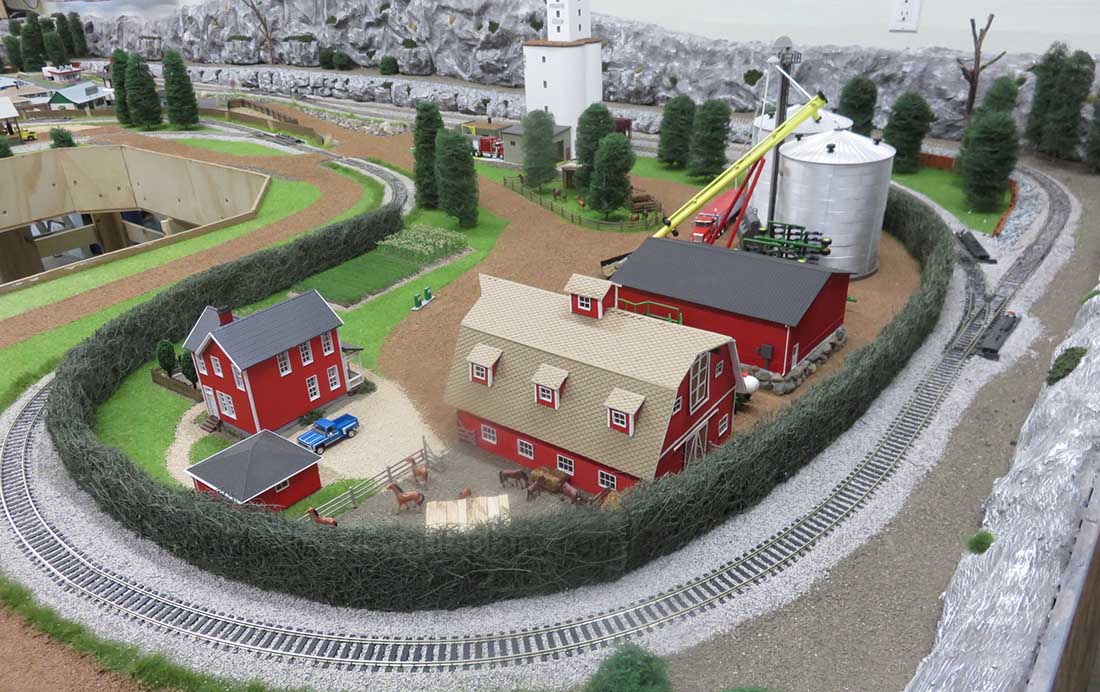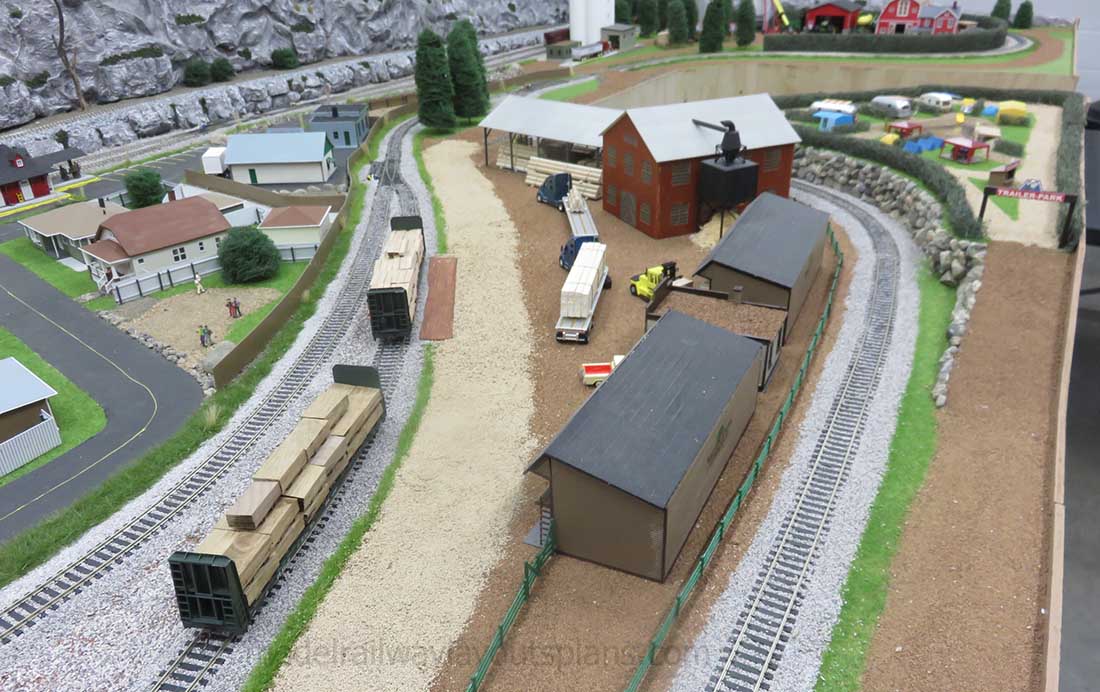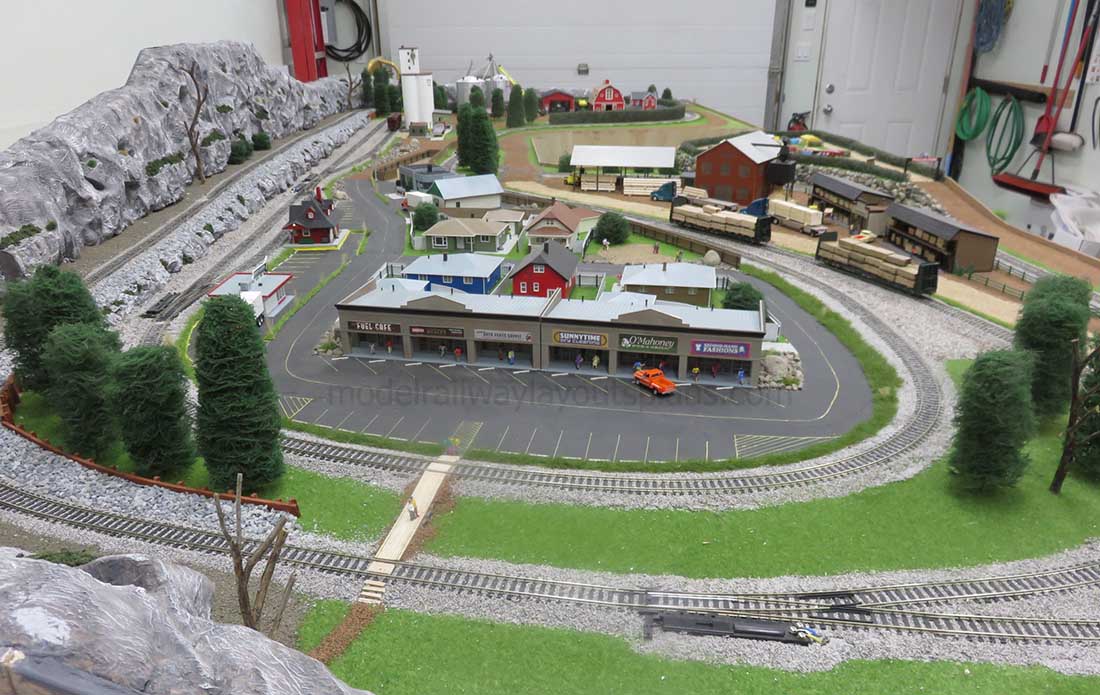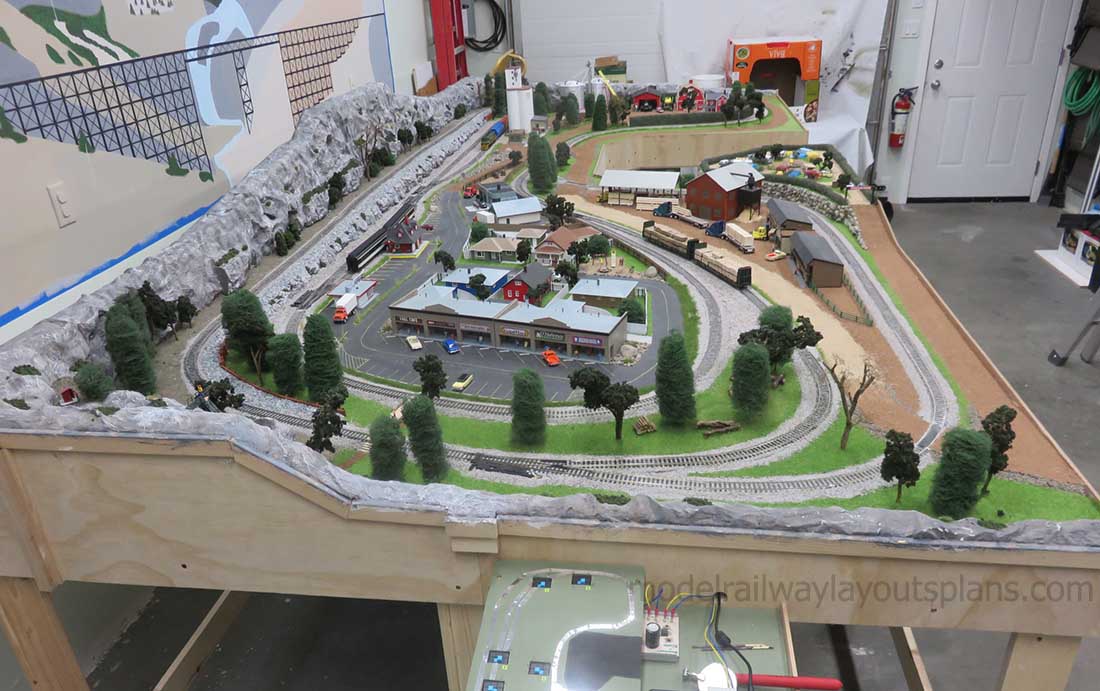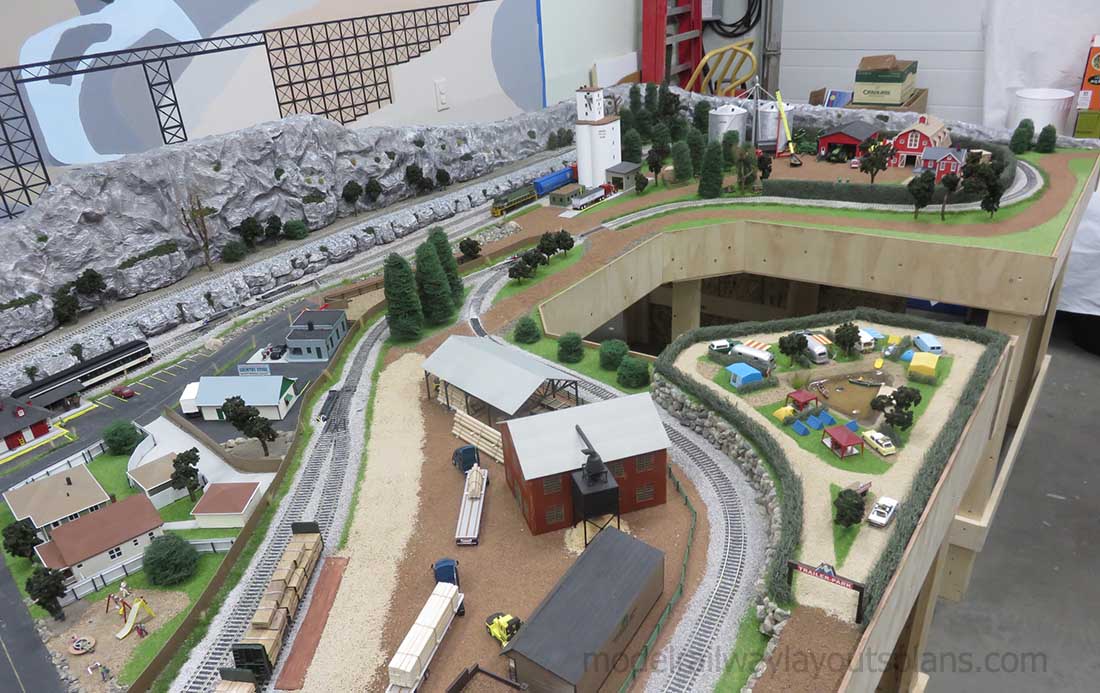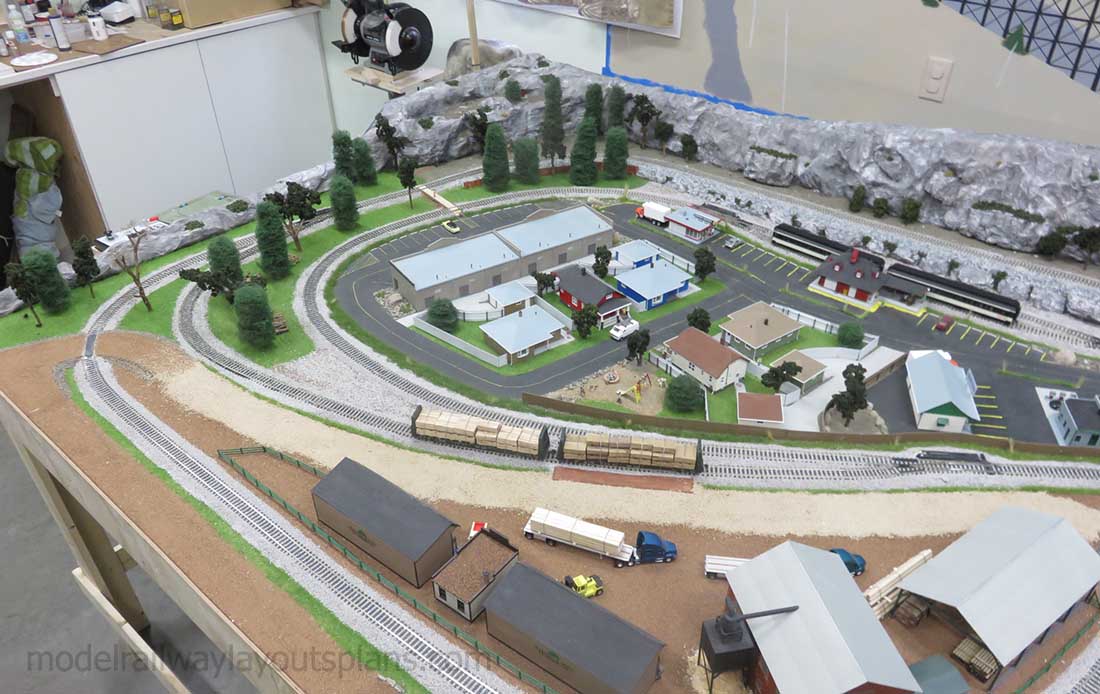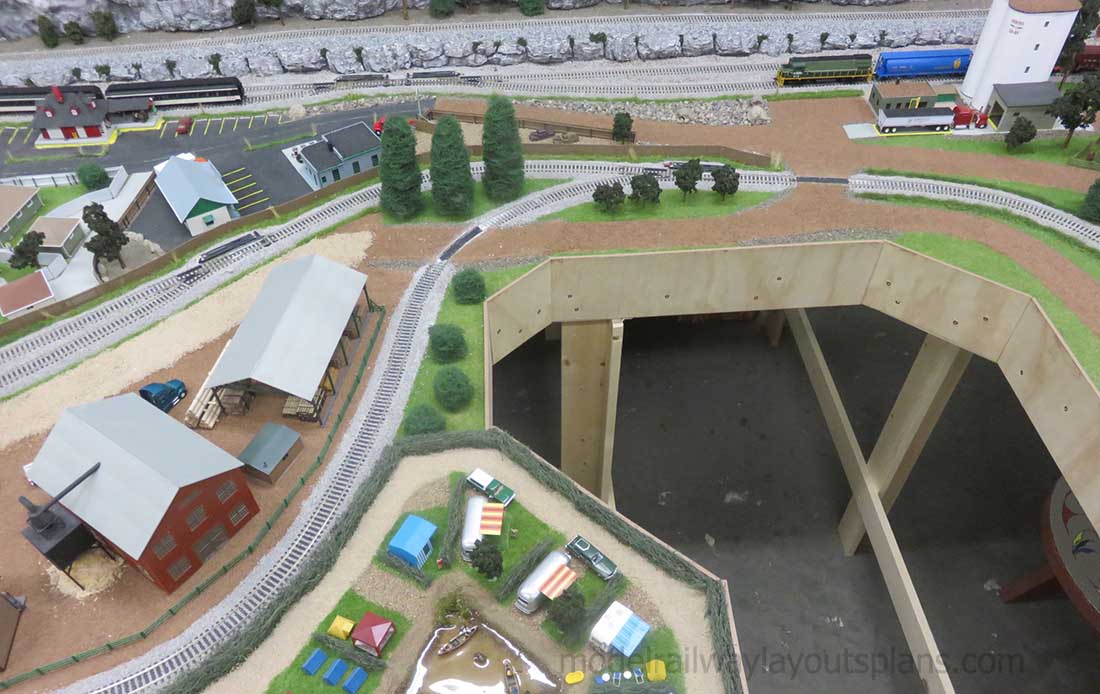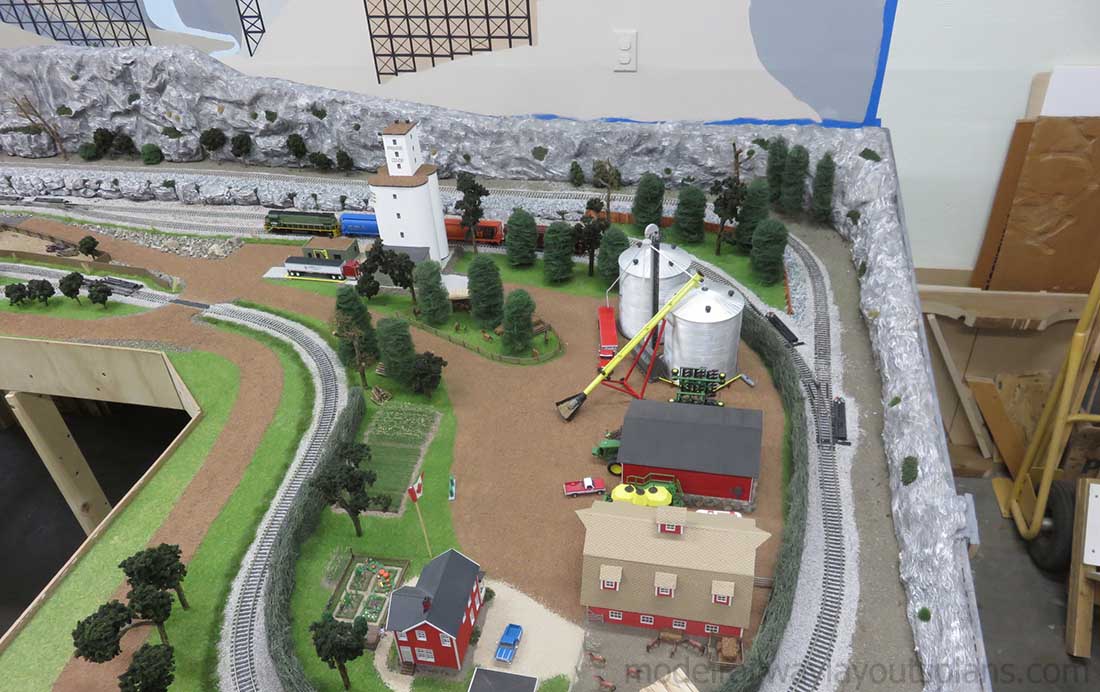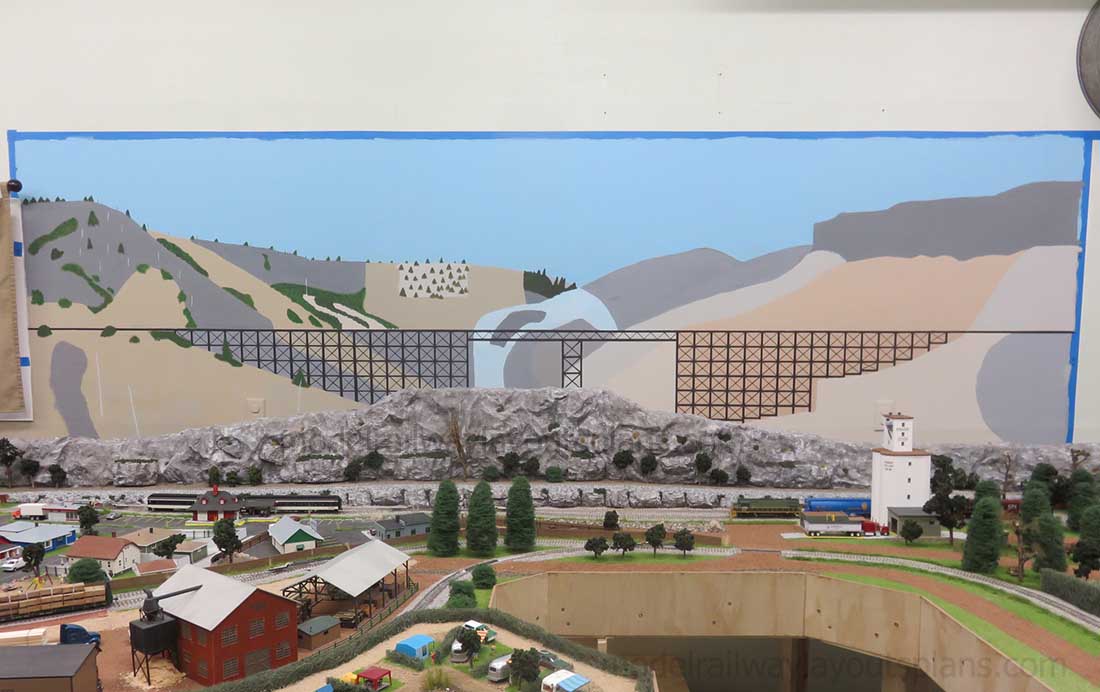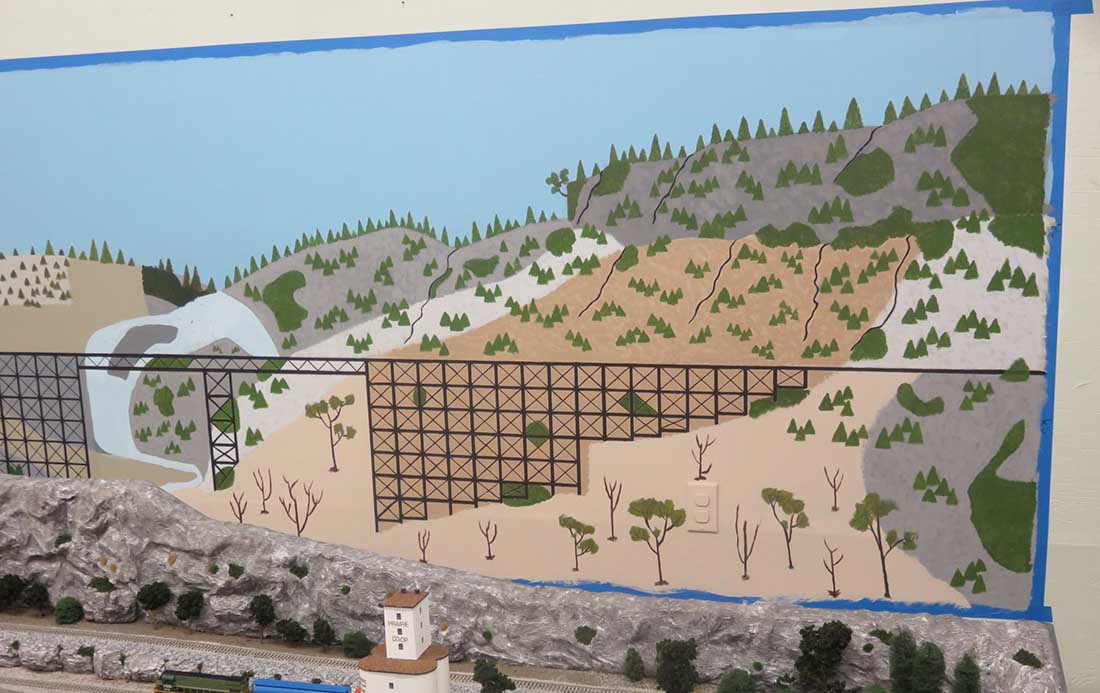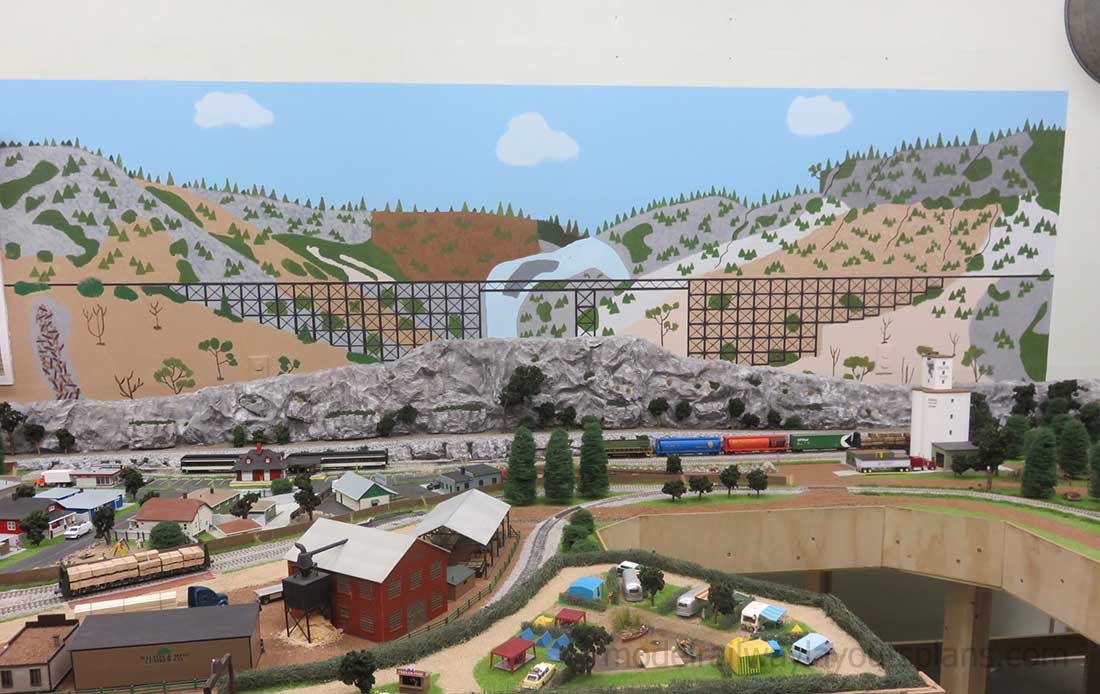The very talented Glyn has been back in touch with his new Marklin HO 3 rail layout:
“Good morning Al,
Thank you again for all you do for the hobby.
I am enclosing a link to my latest layout build now that I am retired to Santa Fe New Mexico.
It’s a 23’x13′ Marklin 3 rail AC layout in 2 parts – the left limb represents a Swiss German border town as I have a large collection of Swiss-German locos and rolling stock which I moved from my previous layout in Peoria Illinois and which you have kindly featured in the past.
The layout passes through a mountain range and slowly morphs into a Depression era New England coastal town to accommodate some of my US locos and rolling stock.
I had a few US style buildings which I have added but am in the process of constructing several large kits from George Selios’ stunning FSM kits.
These are highly detailed and take forever to build but the results are well worth it and will be featured in upcoming videos.
I thought I’d start with this overview which represents about 2 years’ work. I will submit further videos showing the basic framework construction as the layout evolved, as many people new to the hobby love to see how we build these complex creations including all the scenery that brings them to life.
I have a long way to go but at least it is up and running now and I have included some locos running to demonstrate the layout in action.
Much more to follow but I hope your viewers enjoy this early selection.
Regards
Glyn”
Marklin HO 3 rail:
A huge big thanks to Gly for sharing his latest Marklin HO 3 rail.
Here’s some of his previous posts, which are absolutley stunning:
Making mountains for model trains
A big thanks to Glyn.
Lastly, if you want to grab the silly deal on the Big Kahuna printable buildings for $29, the link is fixed now.
That’s all for today.
Please do keep ’em coming.
And if today is the day you get started on your layout, the Beginner’s Guide is here.
Best
Al
PS Latest ebay cheat sheet is here.
PPS More HO scale train layouts here if that’s your thing.
